10 Years of Travel: Where It’s Been, and Where It's Going
A Retrospective of the Last Decade in the Air and on the Road
With a combined 400,000 miles traveled between our team of four editors in 2019, it’s safe to see we see a lot of things in the travelsphere. As we enter a new decade, our team used a mix of travel trends and research, anecdotal evidence, and our own coverage to take a look at how travel has changed in the past decade—including Instagram, low-cost carriers, and the sharing economy—and where it’s going into the 2020s and beyond. (Hint: We see a trip to Africa in your future and maybe a self-driving car or two.) —Laura Ratliff, Jamie Hergenrader, Elizabeth Preske, and Sherri Gardner

2010: Checklist Travel, 2020: Immersive Experiences
We all remember the days of writing down a bucket list for a vacation. A trip to Paris wasn’t complete without seeing “Mona Lisa” and the Arc de Triomphe. And have you really seen London if you didn’t take a picture of Big Ben?
Airbnb’s international expansion in 2011 started to shift the tide towards local, experiential travel slowly and with the launch of Airbnb Experiences in 2016, and subsequently, Airbnb Adventures in 2019, the emphasis on immersive experiences has only grown. Since the 2016 launch, there are now more than 40,000 Experiences across 1,000 destinations. Why reserve an entrance time to the Louvre and wait in line for just a brief glimpse of artistic masterpieces when you can explore artsy Montmartre with a Parisian?
2010: Convenience, 2020: Conscientiousness
Budget airlines have been around since far before 2010—Southwest will celebrate its 53rd birthday in 2020—but the 2010s saw their peak, with WowAir’s 2011 take-off and Norwegian launching transatlantic flights in 2013. Forcing industry-wide price competition even among the long-established carriers (welcome, basic economy!) meant more destinations, and more routes were available to travelers than ever before for jaw-droppingly low prices. One-way flights as low as $30 were no longer considered a steal, but the norm, ushering in the decade of convenient travel. After all, why bother spending a few hours on a train from Paris to London when it’s a one-hour flight?
Well, several years later, we have an answer to that question: the environment. In 2017, the flight shaming movement began (primarily in Sweden, called “flygskam”) to encourage travelers to stop flying due to its impact on climate change. Since then, Swedish air travel has declined rapidly . That movement has spread worldwide (remember when Greta Thunberg completed her entire European tour by train?), and “train bragging” has risen with it. Plus, with the sharp rise in air travel (meaning longer lines, more crowded airports, etc.), train travel is becoming seen as more convenient—no security lines, more space, and the bonus of scenic rides.
And the urge to consider the environment is also an undertaking in the hotel industry. Those tiny shampoo bottles you’d usually stash in your suitcase are being phased out. Marriott, Hyatt, and Hilton have all pledged to eliminate them in the coming years for larger bottles that stay put in the rooms to reduce plastic waste. And while you’ve probably seen the cards in rooms allowing you to opt out of a towel or sheet change to save water, some hotels are offering stronger incentives to do so. Declining any form of housekeeping can now earn you points with hotel brands or a food and beverage voucher for your stay. Again, maybe these initiatives aren’t sacrificing convenience as much as they are reframing it—no housekeeping, no tidying up for the cleaning staff, and no interruptions all day long.
2010: The Rise of the Sharing Economy, 2020: The Fall of the Sharing Economy?
Hear us out on this one: While we’re not saying Airbnb and Uber are going anywhere, a recent spate of bad press for both companies— Airbnb’s massive fraud ring , and Uber’s long-standing labor and safety issues —have led savvy travelers to look toward alternatives.
Low-touch apartment-hotels (think an Airbnb in a building with a check-in desk and some other hotel-like amenities) have been popping up throughout the country. Bode , one such start-up, opened in Nashville and Chattanooga in 2019, with three additional locations planned for 2020. Domio , a competitor, launched its first upscale apartment-hotel in New Orleans earlier this year.
And there’s a good chance that, in a few years, your Uber driver won’t even exist–Google’s Waymo self-driving car incubator expects to add 20,000 vehicles to its fleet in the next few years, enough for more than 500,000 trips each day.
2010: Instagram Influencers, 2020: Instagram Community
Yes, Instagram has been around for (almost) an entire decade now. (Feel old? We do.) And while it began as a place to follow your friends, fam, and maybe a few strangers to engage through comments and likes, it quickly transformed into a marketing tool.
Before we knew it, “influencer” became a real job title, causing our feeds to be filled with promotions of products and places and experiences. Throughout its existence, however, influencers have become a hot topic for several reasons: transparency (or lack thereof) of sponsored content, heavily edited photos to make places look more appealing or whimsical, and the unintentional (but still subliminal) encouragement of “doing it for the ‘gram” that lands many travelers in physical or legal harm just to capture the Insta-perfect shot.
Of course, many influencers have contributed positively to the platform, but many users still crave a more tailored use of the app to cut through the noise. As a result, virtual communities were born, and users were able to follow accounts or hashtags (the latter made possible in 2017) to connect with similar and like-minded travelers. A few examples: @wearetravelgirls (women travelers), @travelnoire (Black millennial travelers), #solotravel (a self-explanatory hashtag with more than 5 million posts), @gaytravelinsta (LGBT travelers), and more. There’s no doubt that Instagram has changed the way we travel, but instead of solely being an outlet for wanderlust, it’s now also an accessible way to connect with travelers worldwide.
2010: Cost-Effective Trips, 2020: Time-Efficient Trips
In 2010, the economy was still coming out of the previous years’ recession, which also meant people were cutting back on leisure expenses, including travel. The “staycation” became popular as people compromised their desire to travel with the need to save money, and instead, put those dollars toward restaurants and attractions in their hometowns to maintain that feeling of discovery and exploration.
Now, as the economy improves, most of us are scant on another valuable resource: time. The challenge of work-life balance, the ability to work remotely from anywhere, and the lifestyle of constant hustle have led travelers to find ways to be more efficient with their trip planning, seeking alternatives to traditional week-long getaways.
One example: "bleisure" trips (business trips extended for leisure purposes) are on the rise—SAP Concur travel and expense data showed that bleisure trips increased by 20 percent from 2016 to 2017, and another study showed that while millennials lead the trend , bleisure is appealing to all generations in the workforce. Long weekend getaways are becoming more popular for the same reasons; you can travel more frequently to spread out and savor your precious time off. In a 2015 survey , close to half of the respondents were more likely to take multiple weekend trips in the year instead of one long vacation, as compared to data from 2010.
With a shorter trip time, though, people are also trying to pack as much into a getaway as possible, leading to new meaning of an “all-inclusive trip.” Some travelers have turned to “country coupling”—visiting more than one country on a trip—and choosing destinations for their diversity of attractions (where can you go that has city life, outdoor adventure, and beaches), and combining destinations to well-known places with nearby off-the-radar places for a mix of bucket list and discovery.
2010: Planning More, 2020: Planning Less
It’s a fact that vacationers are often happier planning a trip than actually taking it, but that blissful planning stage might be fleeting as more travelers look to spur-of-the-moment deals and apps that offer deep discounts for procrastinators. More than 60 percent of travelers have said they would be willing to book an impulse trip if they can get a good deal.
Scott’s Cheap Flights, a popular newsletter that alerts potential travelers to screaming deals on airfare, grew to more than 1.6 million subscribers since its launch in 2013, while apps like HotelTonight make it simple to reserve a deeply-discounted hotel room the day you arrive. Finding things to do and place to eat is as simple as opening Google Maps and seeing what's in the area—the company says searches including "near me" grew 150 percent in 2018 and that trend is set to continue.
No-planning trips are even an option now. Services like Pack Up + Go and Whisked Away take care of everything—down to the destination. All you have to do is give your available dates and your budget. In 2020 and beyond, expect to see more and more spontaneous trips for birthdays, long weekends , or just because.
2010: Zone-Out Travel, 2020: Transformational Travel
When the film adaptation of “Eat Pray Love” came out in 2010, it changed the way we travel. At the time, travel was all about sitting on a beach—just daiquiri in-hand, no introspection necessary. But now, thanks to the film and other factors, we’re all looking for personal fulfillment as we travel.
Women especially are traveling solo more than ever . In the last four years alone, Hostelworld reported an increase in the number of female solo travelers by 88 percent. As we move into the 2020s, we predict we’ll see even more solo travelers looking for that transformational experience.
As for Bali, the romantic centerpiece of “Eat Pray Love,” the Badung Regency Tourism Office revealed that Bali’s Ngurah Rai International Airport saw a 10.1 percent increase in tourists year-over-year—a number that’s only risen since the film’s release a decade ago. Thanks, Julia Roberts.
2010: The Rise of Asia, 2020: Africa and the Middle East Have a Moment
Asia was the lion—literally—of the 2010s' tourism boom. Japan expects 40 million tourists in 2020 (six times the number it saw in 2003), while Bangkok boasts about being a consistent contender for the world’s most visited city . But will unrest in Hong Kong and pollution and environmental concerns quell the region’s growth in 2020 and beyond, making way for a new part of the world to steal the spotlight?
The Middle East and Africa showed strong performances in the latter half of the 2010s, with Dubai leading the charge. The shining Emirate, along with Abu Dhabi, sees more foreign arrivals than any other city in the region, but new opportunities for leisure travelers to visit Saudi Arabia make it one to watch too. (Saudi Arabia and the UAE also plan to introduce a joint visa for both countries.)
Africa is poised for a 2020 tourism boom too: continued post-Arab Spring recovery has seen travelers flowing back into Egypt, while new flights—like Kenya Airways’ historic non-stop between Nairobi and New York in 2018, and RwandAir’s upcoming flight from New York to Kigali, Rwanda—have made the continent easier to reach than ever. Twenty African nations now offer visa-free travel or visas on arrival for Americans, while South Africa just launched an e-Visa pilot for travelers who need them. If you’ve been considering a Kenyan safari or a Nile River cruise, there’s no better time than now.
2010: Overtourism, 2020: Sustainability
As travel has become more affordable, more accessible, and easier to plan than ever, it’s also becoming one of the largest-growing industries in the world . According to the World Tourism Organization, 2018 saw 1.4 billion international tourist arrivals , a record high that occurred two years ahead of schedule according to the organization’s 2010 predictions. Not surprisingly, the onslaught of travelers has been painful for many destinations to handle over the past decade, leading to an era of overtourism.
Iceland is a well-known example. In 2010, just under 500,000 people visited the country; in 2017, more than 2 million did. Some destinations have taken action to combat the suffocation—Venice has started charging day trip visitors a fee, the Louvre now operates on a reservations-only system to limit crowds flocking to get a pic of the Mona Lisa, and the Philippines temporarily closed the island of Boracay to tourism following damage to its landscape from the throngs of visitors.
Destinations haven’t been the only ones taking steps to reduce the impact of overtourism; travelers are now considering that as a factor in their trip planning. Data from Booking.com showed that 51 percent of travelers would go to a lesser-known destination similar to their original intention if it would help reduce the effects of overtourism, a concept known as “second city” traveling. Plus, the idea of going somewhere “off the beaten path” is appealing to a lot of people—crowds and lines at attractions are considerably more tolerable (or non-existent), prices on flights and accommodations are typically lower, and you get to discover things you haven’t already seen all over social media.
2010: Fido Stays Home, 2020: Fido Eats a Filet
Call it the scourge of the fake emotional support animal, but we think dogs on planes, trains, and automobiles are here to stay in 2020 and beyond.
With Americans spending more than $72 billion on their pets in 2018 , hotels are wisening up to the traveler who can’t stand to leave their furry friends at home when they hit the road. A 2016 survey by the American Hotel & Lodging Association found that around 75 percent of hotels allow pets—up from just 50 percent in 2006—with many going above and beyond to cater not only to travelers but to their German Shepherds, too.
At the Dream Hollywood in Los Angeles, pups are treated to Sprinkles pupcakes and mini-bath robes, while Nashville’s Bobby Hotel designed an on-brand hot chicken chew toy. Meanwhile, some hotels have opted to add their own canines to the crew, like Kitty, the resident Bernese Mountain Dog at St. Regis Aspen , or Max, a rambunctious yellow Labrador who rules the roost at Turks and Caicos’ COMO Parrot Cay.
2010: To Grandma’s House We Go, 2020: Grandma Hits the Road
Traveling to your grandparents’ house? That’s so 2010. Now, instead of going to grandma’s house, grandma’s taking the grandkids—and leaving the parents at home. According to an AARP survey , 61 percent of grandparents are interested in taking a skip-gen trip with their grandchildren, and more than 30 percent have done just that. Boomers are generally still healthy and plenty active, and as they enter retirement, they have more time than ever.
Travel Leaders Group found that, in 2017, 91 percent of its agents had booked a multigenerational trip and these families aren't just going to Disney World. A report by Virtuoso, a collection of travel advisors, found that Generation Z—persons born between the mid-1990s and mid-2010s—are influencing their family's travel decisions, leading families from stayed beach vacations toward safaris, adventure-focused cruises, and other excursions instead. In fact, the high seas remain a popular choice, thanks to the wide assortment of activities, dining, and excursions available on cruise lines. A report conducted by the Cruise Lines International Association last year says the industry saw a 45 percent increase in multi-generational adventure travel requests.
2010: The Rise of Culinary Travel, 2020: Food Travel Becomes an (Exclusive) Sport
The 2010s were arguably the decade where eating—and documenting it—became part and parcel for a trip. Now, it’s a competitive sport.
Social media’s rise has spurred travelers to plan every meal before putting fork to plate—or even taking off. A new generation waits in bated breath not only for Michelin guides to be released but also for reviews from sites like The Infatuation, who bought old-guard print guidebook Zagat in 2018. Meanwhile, restaurant reservations are made—and even paid for—in advance, not unlike concert tickets, thanks to services like Tock.
Of course, even if you can get your seat at Noma, you still might want to a truly one-of-a-kind experience like Marriott Bonvoy’s November Moment Masterclass, which involved a private villa stay in the Cayman Islands with renowned chef David Bouley. Or look to Mastercard’s Priceless pop-up: the card issuer has recreated notable restaurants from around the world, like Tokyo sushi cynosure Terazushi and London boîte Lyaness, in an empty SoHo warehouse. (You need a Mastercard to get in, natch.)
2010: Travel Is a Luxury, 2020: Everyone Is a VIP
When the recession hit in 2008, the cost of plane tickets soared, influenced by sky-high fuel prices and other factors. Basic Economy fares and low-cost carriers made travel accessible again. Still, unless you were keen on dropping $4,000 on a business-class ticket, you were likely crammed in the back of the bus, noshing on a $17 airport sandwich.
Now, some carriers and services have aimed to restore a bit of dignity to the everyman’s travel experience, with Delta introducing a revamped transatlantic meal service in late 2019, that includes a welcome cocktail and hot towel service, and services like TSA PreCheck and CLEAR whisking you through security in a flash. Let’s also not forget the LAX’s Private Suite offering—a service that lets well-heeled travelers hang out in a comfortable suite before being driven, via private chauffeur, directly to their aircraft on the tarmac.
What Is the Future of Couchsurfing?
Saving Money on Your Summer Vacation
Bike Travel Is Surging Around the World. Will It Last?
10 Questions to Ask Yourself Before You Plan Your UK Trip
The Top Travel and Outdoor Gear Trends of 2023
10 Travel Trends We're Looking Forward to in 2021
Where to Go in 2023: The Most Exciting Destinations to Explore This Year
New Booking.com Data Shows How Americans Traveled This Summer
Mindfulness About the Environmental Impact of Tourism Is Changing How We Travel
Why Are So Many Hotels Opening Near National Parks?
What Is Overtourism—And Why We Should Be Talking About It
The Future of Tourism in New Zealand
How Tourism Boards in Southeast Asia Have Been Turning to Sustainable Travel
Where to Go in 2021: 10 Future Trips You Can Start Planning Now
Secret's Out! Booking a Private Flight Isn't as Pricey as You Probably Think
The Ongoing Debate of “Last Chance Tourism”
Top Travel Industry Trends (2024-2027)

You may also like:
- Key Transportation Industry Trends
- Startups Revitalizing Travel
- Important Restaurant Industry Trends
The travel and tourism industry is growing at an annual rate of 4.41% .
By 2026, the projected market value will be just under $1 billion.
Here are seven trends driving the future of the travel space.
1. Travelers go it alone
One website reports that 25% of all American millennials plan to travel by themselves each year.
Statistics show that the number of people traveling solo increased by 42% even before the pandemic.
According to Travel Market Report , Intrepid Travel is a small-group travel company that plans trips for 75,000 people per year.
Data shows that more than 50% of the travelers booking with them are going alone.
Overseas Adventure Travel, another small-group travel company, has seen such a boom in solo travel that they’ve upped the number of single spaces they have available in 2021, a 76% increase over 2019.
Solo travelers are big on social media too.

2. Travelers crave local experiences
The "experience economy" is huge in the travel industry.
But fewer and fewer people may be settling for commonplace vacation activities in the coming years.
Instead, “consumers [will] pursue authentic experiences , distancing themselves from mainstream tourism providers and venturing into pastimes that feel more meaningful”.
Data insights company AirSage marks this as an emerging trend because “people no longer want boring and conventional travel experiences as much as they used to. Instead, they would rather pay for vacations that are once-in-a-lifetime opportunities”.
Airbnb is betting on this trend.
Their website has offered the opportunity for consumers to book “experiences” since 2016.
But they also added online experiences in 2020 for people who are seeking to connect with locals without leaving their homes.
Other companies are banking their entire business model on this trend.
Withlocals offers “personalized traveling” — the opportunity for travelers to book private tours and activities with locals around the world.

Camping (and glamping) trips have also become a popular way for people to travel while experiencing the local culture and staying safe amidst the pandemic.
Outdoorsy has been called the “Airbnb of RV rentals”.
And their sales exploded to $1 billion in 2020. That’s 400% growth since 2019.
Under Canvas runs seven glamping camps in wilderness locations across the United States aimed at exploring the local landscape and inspiring human connections.
The company reported a “surge" in demand in 2020 and had "strong" advanced bookings during 2021.

3. Travel tech adoption accelerates
As with nearly all businesses, technology is presenting the travel industry with seemingly endless opportunities.
The pandemic has only increased the speed of tech adoption in the travel industry.
A McKinsey survey showed that, because of COVID-19, “companies have accelerated the digitization of their customer and supply-chain interactions and of their internal operations by three to four years".
One example: room service robots.
Two Chinese hotel giants invested in ExcelLand, a manufacturer that already had 3,000 robots in operation.

BTG Homeinnes is looking at these robots as a way to control costs and safeguard guests.
Hotels, airlines, booking sites, and others are using chatbots like never before.
Travelers can chat with providers during every stage of their journey.
And, they won’t (always) feel like they’re talking to a robot. Advances in AI have made this type of communication hassle-free.
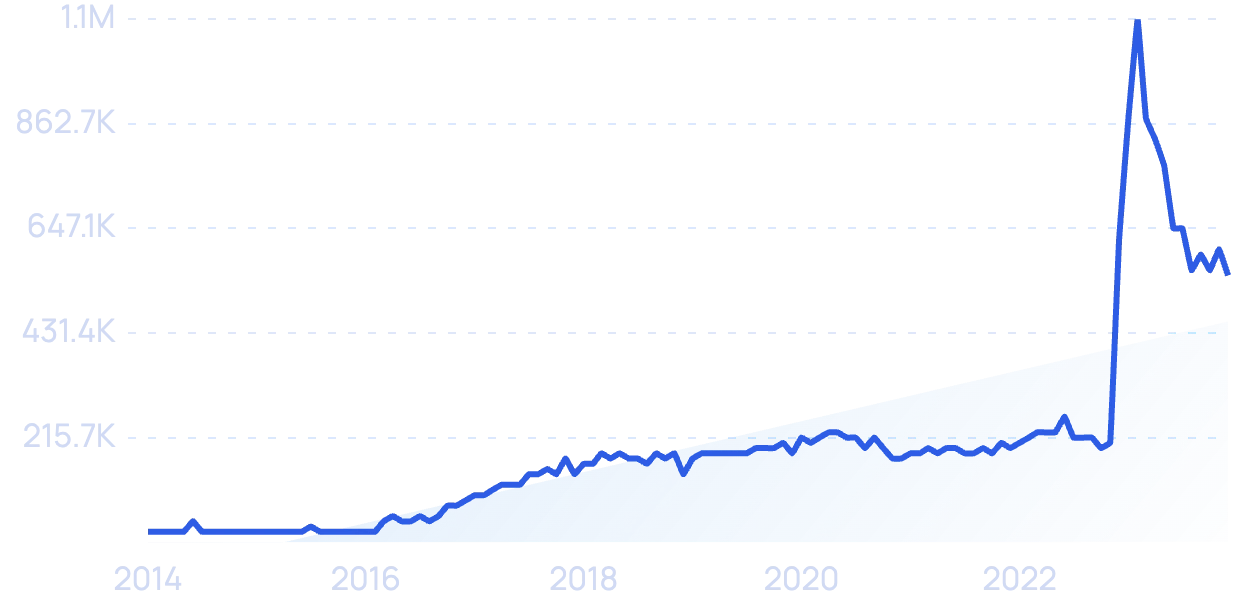
United Airlines has launched an “ Agent on Demand ” service that allows travelers at the airport to video chat with a customer service representative simply by scanning a QR code.
More and more airlines and airports are deploying facial recognition technology.
Corporations and government entities tout this technology as a boon for travel safety.
But many privacy advocates have put a halt to this emerging trend. They warn that this type of surveillance could easily turn dystopian.
With all of this new tech, companies are also continuing to capitalize on an older piece of technology — the smartphone.
Stats show that travelers who book tours and activities on their phone spend 50% more than those who book elsewhere.
4. Consumers blend business and leisure travel
The latest statistics say there are nearly 5 million digital nomads in America.
The concept of being location-independent, traveling and working remotely, has become even more popular since the start of the pandemic.
The hospitality industry is starting to cater specifically to digital nomads.
Aruba is opening its beaches up to travelers who’d like to work remotely, calling the marketing campaign “ One Happy Workation ”.

Visitors can stay for up to 90 days. And do not need any governmental documentation.
Barbados and the Cayman Islands will also let you work remotely from paradise for an extended period of time.
Booking.com reports that the "workation" trend is going strong.
More than 50% of travelers say they would extend their business trip to enjoy personal time at their destination.

In 2020, hotels began catering to locals who needed a quiet place to work.
The Hamilton Hotel in Washington, DC, is just one example. It’s WFH-Work From Hamilton program offers rooms on a 6:00 am to 7:00 pm schedule.
5. The travel industry gets serious about sustainability
Recent data shows that more than half of US travelers believe there aren’t enough options when it comes to sustainable travel .

A poll conducted on behalf of Exodus Travels went even deeper into consumers’ attitudes .
- 91% of travelers see the importance of taking ethical trips
- 56% believe in buying souvenirs from local merchants
- 44% want to support local businesses at their destination
Sustainable travel involves minimizing impact on the local cultural environment.
And also taking an eco-friendly approach to the physical environment.
Nearly 70% of travelers say they are more likely to book accommodations if they know the property is planet-friendly.
Many in the travel industry have recently made commitments to preserving the environment.
For example, India-based ITC Hotels Group has LEED certified each of its hotels.
As of 2023, hotels in the state of California will no longer be allowed to provide single-use toiletries in plastic bottles to their guests.

Marriott International has made a pledge to remove these types of plastics from all their hotels, too. But the pandemic has put a temporary stop to that plan.
A recent report from Skift made this summary statement regarding sustainable travel in the future:
“[It’s a] less flashy way of viewing and traveling the world . . . with an emphasis on safety, sustainability, and profound experiences while getting from point A to B without wrecking the climate and local quality of life in the process”.
6. Electric Air Travel Goes Mainstream
Speaking of sustainability, it looks like flying Teslas are finally here.
And they have the potential to make a big impact on at least three large industries:
The aircraft manufacturing industry, with over $200 billion in annual revenue between the top 3 manufacturers alone (Boeing, Airbus and Lockheed).
Commercial airlines, with $838 billion in annual revenue (pre-COVID).
And the ride-hailing and taxi industry, which was valued at $219.68 billion in 2022.

Electric vehicles are cheaper to run , less expensive to maintain , and better for the environment than vehicles powered by conventional fossil fuels.
That’s just as true for aircraft as it is for cars.
When it comes to electric aircraft, there are two main types: fixed-wing airplanes and eVTOLs.
Fixed-wing electric airplanes are just what they sound like. There aren’t any 747-sized electric airliners yet, but smaller commuter planes are in production.
Eviation is leading the charge. This startup produces a 620-mile range, 9-seat commuter plane called the Alice.
According to the company, flying the Alice is dramatically cheaper than a regular internal-combustion powered airplane.
For a 100-mile flight, conventional fuel for a similar-sized Cessna would cost about $400. In Eviation’s electric Alice, it would only be about $10 .
Eviation recently merged with Clermont Aerospace after a $108.5 million valuation.

At the same time, AeroTEC and MagniX are teaming up to retro-fit existing airplanes with electric motors - with similar improvements to efficiency.
There are also electric-hybrid airplanes in development.
For example, the Project 804 by United Technologies.
As well as the Aero by Zunum, a startup backed by Boeing and JetBlue.
And the E-Fan X by Airbus and Rolls-Royce. This project was shut down in April 2021, but only after achieving its three main initial research goals (according to Airbus).
That covers fixed-wing electrics.
The other major kind of electric aircraft is the eVTOL.
eVTOL stands for “electric vertical take-off and landing”.
Non-electric VTOL examples include anything from helicopters to drones and Harrier Jump Jets.
eVTOLs tend to be smaller than their non-electric cousins, and designed for shorter flights across cities.
Some look like passenger-carrying quadcopter drones. While others have a fixed-wing component like regular airplanes.
Search interest in eVTOLs has been exploding lately as startups and major aircraft manufacturers demonstrate new eVTOL models.

In July 2020, Airbus conducted the first public flight of its autonomous 4-seat CityAirbus multicopter eVTOL. The CityAirbus has a projected range of about 60 miles (or 15 minutes).

Airbus also has Vahana , in development by its Silicon Valley innovation arm, Acubed .
For its part, Boeing’s Aurora Flight Sciences has been developing solutions for an air-taxi service in partnership with Uber. Including an autonomous electric passenger air vehicle.
Separately, Boeing is also reportedly partnering with Porsche to develop another eVTOL.
And Tokyo-based “flying car” manufacturer SkyDrive raised a series B of 3.9 billion yen (about $37 million) and conducted its first public manned demonstration of the SkyDrive SD-03.
The SD-03 is the world’s smallest eVTOL, requiring only as much space on the ground as 2 parked cars.
That small footprint is one of the main advantages eVTOLs have over traditional fossil-fuel powered VTOLs like helicopters.
eVTOLs like the ones mentioned above use multiple smaller electric motors with rotors spread out across the aircraft. Whereas a typical helicopter uses one main internal-combustion engine with two huge rotors stacked above. (Plus a smaller one in the tail.)
eVTOLs’ multi-motor design is called a “distributed electric propulsion” (DEP) system.
DEP systems have numerous advantages. They make piloting easier, reduce the footprint required for take-off and landing, and increase safety through redundancy (if one motor fails, there may be 7 more still running).
They also reduce noise emissions, as the rotors don’t have to spin as fast.
Noise and vibrations within the cabin are lower as well.
Thanks to these advantages, dozens of eVTOL manufacturers are currently vying to capture a share of the nascent “urban air mobility” market: eVTOLs used to fly over traffic.
Germany, Holland, Belgium, France, Mexico, and Brazil have all been experimenting with urban air mobility initiatives.
But with all those benefits, why hasn’t electric air travel caught on before?
Two words: energy density.
In other words, the amount of stored energy in one pound of “fuel” — whether gas, diesel, kerosene or batteries.
Currently, conventional fossil fuels have more energy density than batteries. That’s why electric cars are generally heavier than their gas-powered counterparts. They have to be, in order to store enough power.
For aircraft, this added weight poses an obvious problem.
But it’s a problem we’re getting closer to solving.
Tesla CEO Elon Musk has said that an energy density of 400 Wh/kg (watt-hours per kilogram) is the crossover point for lithium-ion batteries to beat kerosene jet fuel. Once battery technology reaches that level, the sky’s the limit for electric aircraft.
Today, the energy density of industry-leading Tesla batteries is currently about 260 Wh/kg. (Up from 124 Wh/kg in 2007.)
So when might we get to 400 Wh/kg?
Very soon, according to Musk.
(Though he has also said that Tesla has no near-term plans to make electric aircraft.)
That’s it for the top seven trends driving the travel and tourism industry forward into 2024 and beyond.
Through these trends, we can see a dynamic relationship between the travel industry and consumers.
It’s a push-and-pull that’s sure to continue in 2025 and companies that can adapt quickly to the changing wants and needs of travelers are the best suited for future success.
Find Thousands of Trending Topics With Our Platform

US Travel Header Utility Menu
- Future of Travel Mobility
- Travel Action Network
- Commission on Seamless & Secure Travel
- Travel Works
- Journey to Clean
Header Utility Social Links
- Follow us on FOLLOW US
- Follow us on Twitter
- Follow us on LinkedIn
- Follow us on Instagram
- Follow us on Facebook
User account menu
The latest travel data.
MONTHLY INSIGHTS March 04, 2024

U.S. Travel has temporarily paused our monthly data newsletter, however, the latest travel data is still available via the U.S. Travel Insights Dashboard . This dashboard is updated each month (member login required).
The U.S. Travel Insights Dashboard , developed in collaboration with Tourism Economics, is supported by more than 20 data sources. The dashboard is the most comprehensive and centralized source for high-frequency intelligence on the U.S. travel industry, tracking industry performance, travel volumes and predictive indicators of recovery including air and lodging forecasts, DMO website traffic, convention and group trends, travel spending and losses, traveler sentiment, among others to measure the health of the industry.
Key Highlights January 2024:
- Travel appetite started the year on a softer note, but overall growth continued. Air passenger growth remained positive, up 6% versus the prior year but lower than the double-digit growth seen through 2023. Foreign visits remained strong, up 24% YoY.
- Hotel room demand continued a trend of slight contraction falling 1% versus the prior year, while short-term rental demand grew 1%, a lower rate than 2023.
- A particular bright spot was that group room demand within the top 25 markets displayed solid growth of 9% relative to the prior year.
- The outlook for the economy remains fairly optimistic due to the strength of the labor market, looser financial conditions and healthy household and nonfinancial corporate balance sheets. This has filtered through to slightly higher consumer sentiment in February.
- Sentiment is also growing for upcoming leisure travel in 2024. The share of travelers reporting having travel plans within the next six months increased to 93% in January from 92% in December, according to Longwoods International’s monthly survey.
- Travel price inflation (TPI) fell slightly in January as a result of falling transportation prices. Sticky services inflation should see relief from decelerating wage growth. However, upside risks stem from rising healthcare costs, supply chain disruptions and slowing labor supply. Source: U.S. Travel Association and Tourism Economics
Member Price:
Non-Member Price: Become a member to access.
ADDITIONAL RESEARCH
Travel Price Index
Travel Forecast
Quarterly Consumer Insights
Additional monthly insights are available through the full U.S. Travel Monthly Data Report, exclusive to members. Please inquire with membership if you are interested in learning about becoming a member of U.S. Travel Association.
What next for travel and tourism? Here's what the experts say

In many countries, more than 80% of travel and tourism spending actually comes from the domestic market. Image: Unsplash/Surface
.chakra .wef-1c7l3mo{-webkit-transition:all 0.15s ease-out;transition:all 0.15s ease-out;cursor:pointer;-webkit-text-decoration:none;text-decoration:none;outline:none;color:inherit;}.chakra .wef-1c7l3mo:hover,.chakra .wef-1c7l3mo[data-hover]{-webkit-text-decoration:underline;text-decoration:underline;}.chakra .wef-1c7l3mo:focus,.chakra .wef-1c7l3mo[data-focus]{box-shadow:0 0 0 3px rgba(168,203,251,0.5);} Julie Masiga

.chakra .wef-9dduvl{margin-top:16px;margin-bottom:16px;line-height:1.388;font-size:1.25rem;}@media screen and (min-width:56.5rem){.chakra .wef-9dduvl{font-size:1.125rem;}} Explore and monitor how .chakra .wef-15eoq1r{margin-top:16px;margin-bottom:16px;line-height:1.388;font-size:1.25rem;color:#F7DB5E;}@media screen and (min-width:56.5rem){.chakra .wef-15eoq1r{font-size:1.125rem;}} Mobility is affecting economies, industries and global issues

.chakra .wef-1nk5u5d{margin-top:16px;margin-bottom:16px;line-height:1.388;color:#2846F8;font-size:1.25rem;}@media screen and (min-width:56.5rem){.chakra .wef-1nk5u5d{font-size:1.125rem;}} Get involved with our crowdsourced digital platform to deliver impact at scale
Stay up to date:.
- In 2020 alone, the travel and tourism sector lost $4.5 trillion and 62 million jobs globally.
- But as the world recovers from the impacts of the COVID-19 pandemic, travel and tourism can bounce back as an inclusive, sustainable, and resilient sector.
- Two experts highlight some of the key transformations in the sector going forward during the World Economic Forum's Our World in Transformation series.
The Travel & Tourism sector was one of the hardest hit by the COVID-19 pandemic, leaving not only companies but also tourism-driven economies severely affected by shutdowns, travel restrictions and the disappearance of international travel.
In 2020 alone, the sector lost $4.5 trillion and 62 million jobs, impacting the living standards and well-being of communities across the globe. Moreover, the halt in international travel gave both leisure and business travellers the chance to consider the impact of their choices on the climate and environment.
Amid shifting demand dynamics and future opportunities and risks, a more inclusive, sustainable and resilient travel and tourism sector can be - and needs to be - built.
The World Economic Forum's Travel & Tourism Development Index 2021 finds that embedding inclusivity, sustainability and resilience into the travel and tourism sector as it recovers, will ensure it can continue to be a driver of global connectivity, peace and economic and social progress.
We spoke to Sandra Carvao , Chief of Market Intelligence and Competitiveness at the United Nations World Tourism Organization (UNWTO), and Liz Ortiguera , CEO of the Pacific Asia Travel Association in Thailand (PATA), and asked them to highlight some of the key areas of risk and opportunity in the sector during an episode of the World Economic Forum's Our World in Transformation series.
Have you read?
Travel & tourism development index 2021: rebuilding for a sustainable and resilient future, towards resilience and sustainability: travel and tourism development recovery, how can we really achieve sustainability in the travel sector, what are some of the top global trends you're witnessing currently in the travel and tourism sector.
Liz Ortiguera: Given the extended lockdown that we had on travel with the pandemic, vacation for friends and relatives (VFR) is now a high priority for people who haven’t been in touch for a long time thanks to the pandemic. So, people are reconnecting. And that kind of links to the second trend, which is multi-purpose or blended travel. Never before, particularly now that we can connect digitally through Zoom, has the ability to work from anywhere enabled travellers to cover multiple purposes, like visits with friends and multiple business trips. So, we'll find that the duration of travel and the length of stay is longer. And third is the continued high focus on safety and wellness which is top of mind for travellers due to the pandemic. All travel is wellness-related now.
Sandra Carvao: I think there is a bigger concern with sustainability, which is very welcome in our industry. Consumers, particularly the younger generation, are much more aware of the impact they have, not only on the environment but also socially and on the communities they live in. We've also seen an increase in expenditure per trip, so I think people are very eager to go outside, and they're staying longer. And on the other side, I think there are some challenges: we’re seeing a rise in late bookings because restrictions can change at short notice and that’s having an impact on the decisions of travellers. This is putting pressure on the industry in terms of planning and anticipating fluctuations in demand.
Social media surveys have shown that travellers who have immersive experiences are more likely to post about them, which is good for the industry.
What is community-based tourism and why is it important?
Sandra Carvao: One of the positive impacts of the pandemic is that people are looking for local experiences and are spending more time with communities. So, the concept of community-based tourism is obviously one that puts the community at the core of every development, ensuring that it's engaged and empowered and that it benefits. At the UNWTO, we worked with the G20 and the Saudi presidency back in 2020 and produced a framework for tourism development in communities, which states that communities need to be part of the planning and management of tourism activities. We need to go beyond traditional definitions of community to a point where the industry leans on partnerships between the public and private sectors and communities.
Liz Ortiguera: In July 2022, PATA is hosting a destination-marketing forum and one of the key themes is community-based tourism. The purpose is really to put the community and authenticity-in-culture activities at the heart of the travel experience. There are benefits for all stakeholders. One is that travellers can have an authentic experience. They're not in overcrowded, touristic locations and they experience something new and unique within the community. These experiences are designed in partnership with communities who get the benefit of financial inclusion, and if activities are designed properly, the reinforcement of their cultural heritage. Governments also engage in economic development more broadly across countries. Another interesting trend is creative tourism, which means you create an experience for tourists to participate in, like a dance lesson, or a cooking lesson. Social media surveys have shown that travellers who have these kinds of immersive experiences are more likely to post about them online and that's good for the industry.
It is important to emphasize that virtual experiences, while they are a fun tool, can never replace visiting a destination.
How is technology and innovation helping to leverage cultural resources?
Sandra Carvao: One interesting trend we’re seeing is that more and more people are booking trips directly, so communities need to be supported to digitize their systems. Education and upskilling of communities are important so that they can leverage digital platforms to market themselves. From the tourists’ perspective, it is important to emphasize that virtual experiences, while they are a fun tool, can never replace visiting a destination.
Liz Ortiguera: People have been living virtually for more than two years. Amazing innovations have emerged, such as virtual reality and augmented reality, and all kinds of applications and tools. But the important thing is the experience. The destination. Real-world experiences need to remain front and centre. Technology tools should be viewed as enablers and not the core experience. And when it comes to staff, technology can really democratize education. There’s an opportunity to mobilize a mobile-first approach for those who are on the frontlines, or out in the field, and can’t easily access computers, but need to get real-time information.

How is the sector dealing with labour shortages and re-employment of the workforce?
Liz Ortiguera: Labour shortages are much more dynamic in North America and in Europe. But it’s having a knock-on effect on Asia. If, for example, their air carriers are limited by staff and they have to cancel flights, which we're very much seeing out of Europe, seating capacity then becomes a limiting factor in the recovery of Asia Pacific. That's the main constraint right now. And compounding that is the rising price of fuel. But people in the Asia Pacific are keen to get reemployed.
Sandra Carvao: Labour shortages are a priority for the sector in countries around the world. Many workers left the sector during the pandemic and the uncertainty that surrounded the measures taken to contain it left many people unsure of whether the sector would recover. It is time to address things like conditions, scheduling, and work/life balance, all things which have been top of mind for workers during the pandemic. As the sector recovers, we need time to bring new hires on board and to train them to take over where those who switched jobs left off.
Are we seeing a growing trend towards domestic tourism?
Sandra Carvao: We’re talking about 9 billion people travelling within their own countries. And in many countries, for example in Germany, more than 80% of the tourism spending actually comes from the domestic market, similarly in countries like Spain and even smaller economies. Whenever it's possible to travel again, domestic markets tend to be more resilient. They kick off first mostly due to perceptions of safety and security issues. As the world economy recovers from the pandemic, there is a good opportunity for nations to rethink their strategy, look at the domestic market in a different way, and leverage different products for domestic tourists.

When it comes to sustainable tourism, how quickly could we mainstream eco-friendly modes of transportation?
Sandra Carvao: Transport is one of the key contributors to energy impacts and tourism. But it's also important that we look at the whole value chain. The UNWTO together with the One Planet Sustainable Tourism Programme just launched the Glasgow Declaration, which includes green commitments from destinations and companies. We’re seeing a strong movement in the airline industry to reduce emissions. But I think, obviously, technological developments will be very important. But it's also very important to look at market shifts. And we can't forget small islands and developing states that rely on long-haul air travel. It’s important to make sure that we invest in making the problem much less impactful.
Liz Ortiguera: 'Travel and tourism' is such a broad encompassing term that it’s not fair to call it an industry: it is actually a sector of many industries. The pandemic taught us how broad the impact of the sector is in terms of sustainability. There's a big movement in terms of destination resilience, which is the foundation for achieving sustainability in the journey to net-zero. We now have standards to mitigate that impact including meetings-and-events (MIE) standards and standards for tour operators. There are multiple areas within our industry where progress is being made. And I'm really encouraged by the fact that there is such a focus not just within the sector but also among consumers.
This interview was first done at the World Economic Forum's studios in Geneva as part of 'Our World in Transformation' - a live interactive event series for our digital members. To watch all the episodes and join future sessions, please subscribe here .
Don't miss any update on this topic
Create a free account and access your personalized content collection with our latest publications and analyses.
License and Republishing
World Economic Forum articles may be republished in accordance with the Creative Commons Attribution-NonCommercial-NoDerivatives 4.0 International Public License, and in accordance with our Terms of Use.
The views expressed in this article are those of the author alone and not the World Economic Forum.
Related topics:
The agenda .chakra .wef-n7bacu{margin-top:16px;margin-bottom:16px;line-height:1.388;font-weight:400;} weekly.
A weekly update of the most important issues driving the global agenda
.chakra .wef-1dtnjt5{display:-webkit-box;display:-webkit-flex;display:-ms-flexbox;display:flex;-webkit-align-items:center;-webkit-box-align:center;-ms-flex-align:center;align-items:center;-webkit-flex-wrap:wrap;-ms-flex-wrap:wrap;flex-wrap:wrap;} More on Industries in Depth .chakra .wef-17xejub{-webkit-flex:1;-ms-flex:1;flex:1;justify-self:stretch;-webkit-align-self:stretch;-ms-flex-item-align:stretch;align-self:stretch;} .chakra .wef-nr1rr4{display:-webkit-inline-box;display:-webkit-inline-flex;display:-ms-inline-flexbox;display:inline-flex;white-space:normal;vertical-align:middle;text-transform:uppercase;font-size:0.75rem;border-radius:0.25rem;font-weight:700;-webkit-align-items:center;-webkit-box-align:center;-ms-flex-align:center;align-items:center;line-height:1.2;-webkit-letter-spacing:1.25px;-moz-letter-spacing:1.25px;-ms-letter-spacing:1.25px;letter-spacing:1.25px;background:none;padding:0px;color:#B3B3B3;-webkit-box-decoration-break:clone;box-decoration-break:clone;-webkit-box-decoration-break:clone;}@media screen and (min-width:37.5rem){.chakra .wef-nr1rr4{font-size:0.875rem;}}@media screen and (min-width:56.5rem){.chakra .wef-nr1rr4{font-size:1rem;}} See all

Robot rock stars, pocket forests, and the battle for chips - Forum podcasts you should hear this month
Robin Pomeroy and Linda Lacina
April 29, 2024

Agritech: Shaping Agriculture in Emerging Economies, Today and Tomorrow

Confused about AI? Here are the podcasts you need on artificial intelligence
Robin Pomeroy
April 25, 2024

Which technologies will enable a cleaner steel industry?
Daniel Boero Vargas and Mandy Chan

Industry government collaboration on agritech can empower global agriculture
Abhay Pareek and Drishti Kumar
April 23, 2024

Nearly 15% of the seafood we produce each year is wasted. Here’s what needs to happen
Charlotte Edmond
April 11, 2024

- Destinations
- Photo Books
- How it Works
- Testimonials
- Find a Photographer
- 25,000+ 5 star reviews
Select Page
5 Global Travel Trends for 2021 Trip Planning
May 18, 2021

Global travel trends for 2021
With the vaccine rollout in full force across the USA, Canada and other parts of the world, both international and domestic travel are on the rise. However, vaccination is not a passport to the pre-pandemic ways of travel. Mandated safety measures for many destinations, such as presenting a negative test upon arrival and wearing masks, are essential steps for a successful getaway in 2021. In addition, every traveller has the responsibility of implementing safe practices during travel, such as social distancing and hand-washing. As travel restrictions continue to lift, here are travel trends we’re seeing within the travel and tourism industry.

Top 10 Easy Romantic Getaways Close to Home
May 17, 2024
10 Romantic GetawaysIf it’s the right time for romantic getaways (let’s be honest, when is it not?), look no further than...

Top 10 Places to Take Photos in Palm Springs
May 10, 2024
Palm Springs Photo SpotsTucked away in southern California, Palm Springs is an oasis for nature lovers, mid-century modern...

Top 10 Places to Take Photos in Florence
April 24, 2024
5 Florence Photo Spots Since its time as the birthplace of the Italian Renaissance in the 14th century, Florence has been a...
Search the Blog
50+ tips on how to look amazing in photos 📸, travel inspiration, top destinations, recent posts.

Featured On

Pin It on Pinterest
New Research: 5 Trends From Travel’s 2021 Summer Surge

Expedia Group Media Solutions + Skift
September 15th, 2021 at 9:55 AM EDT
Expedia Group Media Solutions’ Q2 2021 Travel Recovery Trend Report features the latest research and key data on how travel is returning, with actionable insights to help guide the industry as it captures new demand.
Expedia Group Media Solutions
This sponsored content was created in collaboration with a Skift partner.
Slowly but surely, the travel and hospitality industry is finding its feet, despite lingering questions ahead. As recovery sets further in, and an increase in leisure travel bookings continues to drive momentum, operators are navigating new consumer behaviors and seeking to set themselves up for the demand to come.
Expedia Group Media Solutions’ Q2 2021 Travel Recovery Trend Report covers the latest growth trends in the industry, shining essential light on the “how” and “where” of travel’s return. “Although Covid-19 variants give rise to caution, the clear signs from our research are that travelers are keen and ready to explore again — including to places they weren’t considering earlier in the pandemic,” said Wendy Olson Killion, senior vice president, Expedia Group Media Solutions.
The report is the latest edition of Expedia Group Media Solutions’ widely embraced quarterly Travel Recovery Trend Report, following up the first version released in May 2021, which harnesses exclusive access to more than 300 petabytes of Expedia Group first-party data and custom research.
SkiftX unpacks the encouraging trends seen in the second quarter of this year, focusing on Expedia Group’s key data, to assist brands and operators industry-wide with actionable insights in order to captivate consumers and position themselves for the demand to come.
DOWNLOAD THE REPORT NOW
Rising Search Volumes
A key takeaway from the report shows that search volumes across the board rose in Q2 2021, jumping up 70 percent from the first quarter of the year.
Travelers demonstrated their desire to make up for lost time and travel more throughout this summer and beyond, enabled by access to vaccines and the subsequent easing of border restrictions in many parts of the world.
This dovetails with the more optimistic attitudes around post-pandemic travel that travelers reported. Expedia Group’s Traveler Value Index further shows that 72 percent of travelers said they plan on traveling over the next 12 months, based on a survey of over 8,000 consumers in eight countries.
While questions around the state of the pandemic remain at the moment, brands and operators industry-wide ought to feel encouraged to bolster their marketing and analytics in order to make the most of the upward trend.
Lengthening Global Search Windows
During the height of the pandemic, travelers felt restricted, typically opting for short trips — often booked at the last minute — close to home. This behavior continued through Q1 2021 and was still a feature of the second quarter of the year, with half of global searches again having a 21-day search window or less.
Encouragingly, this trend appears to be changing. Searches with a longer window of 22 to 90 days in advance of travel dates accounted for more than 35 percent of searches in Q2, up nearly 25 percent compared to the first quarter of the year. This indicates that travelers are feeling more confident to start booking on the back of loosening global restrictions.
International Travel Gains Steam
International travel diminished virtually overnight at the height of the pandemic. But in Q2 2021, these bookings appeared to be rising. Globally, searches for international destinations grew at a faster rate than those for domestic destinations during several weeks of Q2, correlating with a growing number of green list countries and fewer international restrictions. Additionally, while 60 percent of consumers reported that they will travel within their home country in the next 12 months, 27 percent also said they would do so internationally.
Interestingly, one in two Americans plan to take a dream vacation, or take more trips for longer, compared to before the pandemic, according to a recent Expedia Group survey. Bucket list destinations, such as Italy, Hawaii, and Mexico — as identified by the Media Solutions 2020 “Where Next?” campaign — have a unique opportunity to seize on this demand during travel’s rebound.
Urban Hubs for the Win
Beach and city destinations made up the top 10 booking choices for destinations in Q2 2021. However, the preference for cities seems to be on the rise.
Cities that either entered the regional top 10 or moved up in ranking during Q2 include: Chicago and Atlanta among travelers based in North America; Seoul and Jeju City for travelers from Asia-Pacific; Copenhagen and Paris for those from the Europe, Middle East, and Africa regions; and Houston and Mexico City among travelers based in Latin America.
Hotels also saw an increase in demand, rising 10 percent between Q1 and Q2 2021 globally. This is a trend that will likely continue as more regions and destinations open their doors to a steadier flow of international traffic.
Growing Demand for Sustainable Choice
Consumers also indicated a strong preference for more eco-friendly and sustainable products, with Expedia Group’s Traveler Value Index highlighting that more travelers are seeking to minimize their environmental footprint and negative impact on local communities.
Nearly three in five customers reported their willingness to pay more for these types of culturally and environmentally sensitive experiences. This was especially true for Gen Z and millennial travelers, two-thirds of whom said they’re more likely to consider eco-friendly travel, at least some of the time.
Hotels, operators, and travel brands in every sector of the industry would do well to deepen their commitments to eliminating single-use plastics, boosting recycling facilities, and making more use of electric car charging stations, LED light bulbs, and renewable energy — touchpoints which ranked especially high in the consumer feedback.
“The gradual recovery and rebuilding of the travel industry continued in Q2, and we’ll continue to track and publish these trends in the quarters to come,” Olson Killion said. “But what our research in Q2 also showed is that many travelers are looking for a changed travel industry to re-emerge after the pandemic — a message that all travel brands and operators should consider.”
To learn more about Expedia Group Media Solutions’ research, join Wendy Olson Killion, senior vice president, Expedia Group Media Solutions, for her presentation, “Building Back Better: Traveler Trends & Insights Driving Recovery,” at Skift Global Forum on September 22, 2021.
This content was created collaboratively by Expedia Group Media Solutions and Skift’s branded content studio, SkiftX .
Have a confidential tip for Skift? Get in touch
Tags: consumer travel trends , Expedia Group Media Solutions , SkiftX Showcase: OTAs , summer travel , travel recovery , travel research

The New Equation

Executive leadership hub - What’s important to the C-suite?

Tech Effect

Shared success benefits
Loading Results
No Match Found
Bring your shades. The future looks bright
5 travel trends to track
What will the future look like for travel after the abrupt standstill in early 2020? With vaccinations on the rise and infections on the decline in the US, a growing number of consumers are eager to get away. Many have the financial wherewithal, having been hunkered down at home for much of the past year, with fewer-than-usual opportunities to spend money.
Despite this enthusiasm, many travel companies are struggling to visualize—and shape—the future of travel, recognizing that they need to acknowledge newly formed consumer expectations for trips to the mountains, the beach or the boardroom.
To understand the latest shifts in travel expectations, attitudes and behaviors—as well as the sustainability of those shifts—PwC surveyed more than 1,300 US consumers in April 2021 and compared the results to earlier surveys conducted in April and August of 2020. Most respondents to our latest survey told us they have at least one flight and/or an overnight stay planned for business or leisure within the next 12 months.
1. Pent-up travel demand is bubbling up. Will the bubble burst?
Consumers are on the move again, requiring travel providers to think about how best to balance supply with demand in the wake of nuanced consumer considerations: Despite the propensity for price to dominate travel purchase decisions, consumers also have health and safety concerns.
Higher income households have seen an increase in savings. Combined with increased vaccination rates, this bodes well for travel. In fact, our survey indicates that consumers are willing to spend more money (13%) for nicer accommodations (28%) and for longer periods of time (24%) on future travel. Moreover, with borders starting to open up to vaccinated travelers, more of them are starting to plan international trips: almost 25% are planning trips to Europe or the Caribbean.
Meanwhile, some consumers remain tentative: 24% told us their leisure travel plans won’t match pre-pandemic levels until at least 2023, and 14% plan to spend less on their next vacation than they did before the pandemic.
Cruises are not high on travel lists: 80% said they’re neutral or unlikely to take a cruise in the next 12 months, an increase from both our previous surveys in 2020. Exceptions are 18-to-24-year-old deal-seekers and high-income consumers (household income over $250,000).
Once consumers have satisfied the urge to travel with spring and summer trips, will travel slow down again? Consumers may well base holiday travel decisions on their experiences in the coming months.
Only 3% of consumers who received stimulus checks spent that money on travel; more than half saved their checks to spend later. Of those, only 15% plan to spend it on travel.
Key takeaways
To gain market share by appealing to willing travelers, look to eager-to-travel customer segments, as well as how best to target them. Leveraging the right customer tools and insights platforms can help effectively match demand with media spending to optimize ROI.
Travelers are now more comfortable venturing farther away from home . . .
. . . however, public health concerns persist, 2. public health remains paramount .
Safety matters to consumers; they underscored that for us. Our survey found that a clear majority—85%—have either already been vaccinated or plan to be. And 70% favor vaccination verification while traveling.
More than half (56%) support policies that would prevent those without proof of vaccination from traveling. Meanwhile, 14% would be upset if asked for proof of vaccination, creating both opportunities and risks for providers to design future travel experiences around health policies.
In response to consumer public health and safety concerns, travel companies have upgraded safety protocols and infused policies with more flexibility. Many of those changes appear likely to remain in place for the foreseeable future.
Public-health concerns linger:
More than half (56%) believe brand-name hotels are safer than short-term rental properties. Only 13% feel short-term rentals are safer alternatives.
Almost a third (28%) plan to stay at higher-end properties than they did before the pandemic, associating them with better public health protocols.
A third of travelers (36%) are willing to spend more to increase the distance between themselves and others on a flight. On average, they would spend 16% more.
85% of consumers are concerned that current vaccines will not be effective against variants; optimism in travel recovery could be fragile.
Brand trust, always a factor in purchasing decisions, took on outsized importance at the beginning of the pandemic when consumers sought the assurance of cleanliness. By the fall of 2020, price replaced brand trust as the #1 factor, with brand trust a close second—but only for consumers who had actually ventured out to travel. For all others, brand trust still held sway. Today, with more consumers vaccinated and case counts down, traditional purchase drivers have surpassed brand trust, and flexibility seems to be increasing in importance.
Consumers are still emerging from more than a year of pandemic-related anxiety. Provide more options and greater flexibility for travelers (such as offering flights or communal areas exclusive to vaccinated customers) to help accelerate revenue recovery while also offering safe, meaningful experiences.
Consumer confidence in travel is now on the upswing . . .
...with public-health concerns evolving over the past year, 3. an enthusiasm gap emerges.
By a wide margin, travelers who have taken at least one trip since the onset of the pandemic enthusiastically recommend it to others: More than 70% would recommend flying and more than 60% would recommend overnight stays to those who have not yet traveled. Meanwhile, a small group (10%) of those who have already traveled are unwilling to recommend it to others.
It comes as no surprise, then, that these reluctant travelers rated every type of social gathering as riskier than the travel enthusiasts. They were twice as likely to avoid gatherings of 10 or more people and consistently a year behind the enthusiasts when estimating resumption of pre-pandemic travel habits. A major reason was their first travel experience after the onset of the pandemic; this group was decidedly not any more comfortable traveling after their first flight or overnight stay.
That’s not to say the reluctant travelers won’t catch up soon, now that proven vaccines are available and case counts are down. Those who haven’t traveled at all might well represent even more demand in the months ahead since they’ve been holed up at home for much of the past year.
The best travel ambassadors are those who’ve already taken a trip since the onset of the pandemic: More than 70% of them would recommend flying and more than 60% would recommend overnight stays to those who have not yet traveled.
Our previous study revealed the importance of the first trip that travelers take after the onset of the pandemic: That first trip alleviated all health concerns for more than 50% of travelers. For many travelers, the first travel experience will determine future patterns, thus amplifying each moment spent engaging with your brand. Empower front-line staff, your most powerful personalization option, to engage with travelers and provide the comfort and reassurance they seek . Employ analytics to uncover and reward customers who are encouraging others to travel.
A tale of 2 travelers
4. less-than-eager business travelers begin planning business travel.
After a year of remote work and video calls, we expect business travel to make a gradual comeback in the months ahead. However, as business leaders rethink corporate travel policies, the future of business travel remains somewhat amorphous.
Here’s what we do know from our survey: Consumers expect business travel to return sooner rather than later. Some 40% of business travelers believe they will meet or exceed pre-pandemic levels of business travel by the end of 2022, regardless of whether they’ve actually planned their next business trip.
They might well be waiting for final travel-policy guidance from employers and clients. Understandably, travel suppliers are cautiously optimistic. However, the enthusiasm for business travel is lagging: However, business traveler enthusiasm is lagging: 75% of business travelers in our survey are not excited about or are indifferent to traveling again for work.
They may not have a choice: Almost half (46%) are concerned their income or employment could be negatively affected over the next 12 months. Meanwhile, a third of business travelers don’t want to go back into the office, saying they’re happy to work remotely.
Almost half of business travelers (46%) may not have a choice about traveling for work because of concerns that their income or employment could be negatively affected over the next 12 months.
Key takeaways
Connect with the person behind the business travel persona to inspire long-term loyalty. Consumers have already told us they’re not eager to resume business travel, leaving an opening for travel providers to make business travelers as comfortable as possible and keep them coming back. Personalize the travel experience to provide the right combination of rest and adventure that each business traveler seeks. A genuine demonstration of empathy for business travelers can create a loyal, long-lasting customer relationship.
The road back to business travel - when the base of business travelers return (cumulative)
5. brand loyalty still up for grabs.
While consumers are eager to travel, they may not go back to their pre-pandemic providers. When we surveyed consumers last summer, some 40% told us they would likely switch loyalties. That trend is now taking root: One in three travelers followed through when it came to trying a brand other than the one currently holding their highest loyalty program status. 85% of them told us they’re likely to stay with the airline they switched to while 76% said the same about hotels.
Why are these travelers switching brands? 60% of respondents said the most important reason is better pricing, offers or packages.
The data tell a different—and more nuanced—story for top-tier members of loyalty programs:
Almost half (46%) of top-tier members say loyalty programs are even more important now than they were before the pandemic—more so by far than all membership tiers.
Highest-tier loyalty members are also the most likely to switch brands, a trend we first saw in the last installment of our survey. In fact, our current survey revealed that they are all open to switching.
Contrary to the general traveling public, the highest-tiered loyalty members are switching for other noteworthy reasons, the greatest of which is the opportunity to experience a new brand, their benefits, and experiences.
For loyalty program managers, there is some good news. Loyalty balances have been growing over the past year, with 30% of members planning to redeem those balances on imminent future travel. Some 20% plan to continue saving points or miles to redeem for greater travel rewards later. Meanwhile, roughly a third (30%) say their points don’t provide the appropriate value to redeem at this time and 20% plan to redeem points for non-travel items or transfer them to a partner.
Highest-tier loyalty members say loyalty is more important now than pre-pandemic. They are also more likely to switch brand loyalties than lower-tier loyalty-program members.
The opportunity exists: Protect valued loyalty members and entice others away from competing brands. Consumers have told us in no uncertain terms what matters most to them—price. But that’s not all. They also want flexibility and new experiences after a year of having had their lives upended. While revenue recovery has been top of mind for travel brands during post-pandemic recovery, a more robust revenue opportunity lies ahead.
Top-tier loyalty members most likely to stay with the brands they switch to
Willing to stay with new airline by tier status, willing to stay with new hotel by tier status, . . . in the quest for new experiences, travelers on the move bring new opportunities .
For the first time in more than a year, travel providers see bright days ahead. With vaccinated populations trending up and case counts trending down in the US, all signs point to travelers on the move.
Airlines and hotels have a renewed opportunity to welcome back old customers and wow new ones with personalized service, cementing long-term bonds with attractive loyalty programs.
For starters, understand newly formed consumer expectations and be willing to think beyond pre-pandemic business practices to create innovative, safe and meaningful experiences for all travelers.
Related content
Travelers on the move again.
PwC's Traveler's Sentiment Survey explores evolving expectations, attitudes and behaviors about travel and how uncertainty continues to reshape the travel...
How to restore confidence in travel during an uncertain time
Safety is top of mind for consumers as they look beyond the current shelter-in-place mandates toward a recovery period when they can resume traveling. What else...
ESG regulations and your company
Actions to transform your ESG reporting strategy

Principal, Customer Transformation and Loyalty, PwC US

Customer Transformation and Loyalty Director, PwC US

Sindhu Zachariah
Director, PwC US

Thank you for your interest in PwC
We have received your information. Should you need to refer back to this submission in the future, please use reference number "refID" .
Required fields are marked with an asterisk( * )
Please correct the errors and send your information again.
By submitting your email address, you acknowledge that you have read the Privacy Statement and that you consent to our processing data in accordance with the Privacy Statement (including international transfers). If you change your mind at any time about wishing to receive the information from us, you can send us an email message using the Contact Us page.
© 2017 - 2024 PwC. All rights reserved. PwC refers to the PwC network and/or one or more of its member firms, each of which is a separate legal entity. Please see www.pwc.com/structure for further details.
- Data Privacy Framework
- Cookie info
- Terms and conditions
- Site provider
- Your Privacy Choices
- Inspiration
- Destinations
- Places To Stay
- Style & Culture
- Food & Drink
- Wellness & Spas
- News & Advice
- Partnerships
- Traveller's Directory
- Travel Tips
- Competitions
All products are independently selected by our editors. If you buy something, we may earn an affiliate commission.
The biggest travel trends for 2024
By Sarah Allard

If 2022 was all about a return to travel, then 2023 was the year we went further than ever before. Travellers took to the skies, rails, roads and seas to tick off major bucket-list moments, with Arctic adventures, luxury yacht cruises and even the first tourist trip into space .
In 2024, travellers will be putting what’s important to them front and centre of their plans, valuing deeper experiences that leave a positive impact, time spent with loved ones and wellness moments that last well after checkout. We’ll be choosing destinations carefully, slowing it down to enjoy the silence and the stars, indulging in our love of food in new and interesting places, and immersing ourselves in wellness practices that help us live longer.
These are the 20 travel trends likely to guide how we see the world in 2024.

Astro tourism
1. Astro tourism
What’s the trend? Astronomy, of course, is a field of study that has been around since the dawn of civilisation, and the act of gazing up at the stars has long been a source of soul-soothing wonder. Today, the more society falls deeper into an ever-expanding virtual world, the more we feel a need to broaden our horizons in the real universe. Astro tourism, or star bathing, is the act of travelling with the aim of catching sight of astronomical phenomena – disappearing to lands devoid of any pollution, crowds and traffic, where we can focus solely on the skies above and while away hours gazing at the stars, planets and constellations overhead.
Why will it matter in 2024? Increasingly, wellness-centric hotels and spas are creating the space for guests to gaze upwards, watching for comets, spying constellations and identifying patterns in the glittering expanse. In the UK, Port Lympne has opened the Lookout Bubble, a glass dome allowing guests to sprawl out on king-sized beds and study the stars. Further east on the Arabian Gulf, Zulal Wellness Resort is surrounded by the expanse of the Qatari desert – the ultimate destination for pollution-free astromancy, with dedicated workshops and stargazing sessions for families and children looking to learn more about the cosmos. Safari company Desert & Delta organises trips for travellers looking to soak up the stars across Botswana and Namibia, where guests can sleep in tents at remote locations such as the Makgadikgadi Pans, one of the world’s largest salt flats, and spend nights with uninterrupted star vistas. Similarly, Tswalu is a South African safari camp with star beds set on a sleep-out deck in the Korannaberg mountains. And 2024 happens to be a big year, astronomy-wise, from mind-boggling eclipses to spectacular meteor showers – plus, scientists are predicting the best displays of the northern lights in 20 years, according to the Guardian , as we approach the next solar maximum (the sun’s peak of its 11-year activity cycle). Olivia Morelli
2. Eco diving
What’s the trend? A rise in divers choosing their travel destinations based on the sustainability of the scuba centres, and having a more positive, regenerative impact on the ocean once there.
Why will it matter in 2024? In 2022, UK marine ecology charity The Reef-World Foundation found that 95 per cent of divers wanted to book with sustainable operators, but struggled to do so. In response to this, the Professional Association of Diving Instructors (Padi) launched its Eco Center accreditation on World Earth Day (22 April) 2023, with the United Nations Environment Program and Reef-World itself. The steps required to earn this green status are so rigorous – including sharing evidence of conservation activities and a real reduction in environmental footprint – that Padi advised operators to allow at least 12 months to hit the criteria, taking us to… Earth Day 2024. After an initial figure of just 11 worldwide, there are now 100, and Padi has set a goal to reach 660 by 2030 – a 10th of its membership. “South East Asia currently has the highest density (more than 20), along with the Caribbean ,” says Julie Andersen of Padi. So what does this mean for divers and their trips? “The type of conservation work done and reported on depends on the Eco Center,” Andersen explains. “Those in the Caribbean offer coral replanting programmes, key for regenerating coastlines. In Baja, Mexico , they’ve developed citizen science courses, collecting data for whale conservation.” There are also a number of new Padi courses being launched for any diver to take anywhere, including the Global Shark and Ray Census in August 2024, as well as the relaunch of the Coral Reef Conservation Specialty course before December. Becky Lucas
3. Home swapping
What’s the trend? Increasingly, discerning travellers are looking to stay away for longer stretches, while the rise of remote jobs post-pandemic means that working and living abroad has never been more appealing. The catch? Forking out on hefty accommodation fees while you’re at it. Enter home swapping: the perfect solution to guarantee yourself a (free) home abroad while you offer up your own in exchange – for weeks or even months at a time.
Why will it matter in 2024? As the cost of holidaying continues to climb, home swapping is an affordable alternative to splashing out on expensive hotels or Airbnbs. And while the concepts of couch surfing and house exchanges have existed for decades, several slick new platforms are redefining what home swapping looks like today. Twin City, which operates in cities as far-flung as Lisbon and Los Angeles , has curated a community of 1,100 plus carefully vetted users in just eight months. For an annual subscription fee of £150, members can find Twins to connect with through the platform, and are encouraged to exchange local recommendations for their city as well as their homes, enabling members to feel as if they’re swapping with a trusted friend rather than a stranger. Meanwhile, Kindred, a home-swapping platform where members rack up credits for each night that they exchange homes, raised $15 million in funding this year to expand operations across the USA and Europe, and currently has 10,000 plus homes in more than 50 cities. Members simply pay a cleaning and service fee for each stay, while the cost of the stay itself is free. Or skip out on membership fees entirely and head straight to TikTok, where Gen Z appears to be spearheading the home-swapping movement on social media. Inspired by cult film The Holiday , trending tags #houseswap and #homeswap have garnered more than 23 and 20 million views respectively, with users utilising the platform as a means to advertise their homes, discover like-minded peers to swap with and document their adventures along the way. Gina Jackson
4. Train stations are the new food destinations
What’s the trend? Train stations around the world are usually passed through as quickly as possible, having not been designed for commuters to stay and hang out. Nowadays, as travel delays increase and visitors want more local experiences, it pays for train stations to welcome travellers with shops, restaurants and bars for them to explore. In an effort to create a more dynamic visitor experience, historic train stations are being revamped, with bespoke food and drink offerings as an integral part of the redesign.
Why will it matter in 2024? As train stations are renovated to accommodate more travellers and update old infrastructure, local restaurants and bars are being added to attract more customers. In 2023, the new Moynihan Train Hall in New York City became home to The Irish Exit, a bar from the team behind the acclaimed Dead Rabbit, and Yono Sushi by trendy BondST, plus outposts of beloved NYC restaurants Pastrami Queen and Jacob’s Pickles, with Mexican hotspot La Esquina coming soon. Platform 1 a new bar and restaurant that opened in November underneath Glasgow Central Station . The cave-like space, with its historic brick arches, serves street-food-style dishes and craft brews made in the on-site microbrewery, plus there’s an outdoor beer garden. As part of its renovation, Toronto’s Union Station launched Union Market in May 2023 with favourite local food retailers Manotas Organics, Chocolatta Brigadeiro’s, Patties Express and Kibo. Meanwhile, in Somerset, Castle Cary station is in the process of a revamp, with nearby hotel The Newt creating a creamery, cafe and co-working space, which is set to open in 2024. Also on tap for the next few years is the completed renovation of 30th Street Station in Philadelphia, with plans for a 20 per cent increase in concession space that will focus on local purveyors. Devorah Lev-Tov
5. Sports tourism
What’s the trend? No longer the domain of lads on tour keen to sink as many pints as possible with one eye on a football game, sports tourism has evolved in the past few years with a new generation – and type – of sports fan emerging thanks to glossy TV documentaries ( Formula 1: Drive to Survive , we’re looking at you). Now, we’re taking our fandom out of the house and following a host of different sports in destinations across the world, planning holidays that hinge around seeing games, races and other activities in exotic locales, and extending trips on either side to see the sights too.
Why will it matter in 2024? A little event known as the Olympic and Paralympic Games anchors the 2024 sports calendar. It kicks off in Paris in late July and runs until early September , during which time more than a million tourists are expected to check in across the French capital. The games have inspired city-wide projects such as the €1.4-billion clean-up of the Seine, which , all going well, will allow public swimming in the river for the first time in a century. Elsewhere, the Tour de France starts in Italy for the first time in 2024, with competitors speeding off in Florence before heading to Rimini on the Adriatic coast and then north to the Apennines through Emilia-Romagna. New bike routes in the area have been released by tour operators such as Ride International Tours and Ride Holidays for cycling enthusiasts keen to join in the fun. Sarah James
6. Coolcationing
What’s the trend? For the vast majority of folk, summer holidays used to be about following the sun, seeking the heat – watching the mercury climb and hitting the sands. With the intense, record-breaking temperatures of recent years, however, many are considering travelling in the opposite direction: booking "coolcations" in temperate destinations, which also benefit from being less crowded.
Why will it matter in 2024? Rising temperatures caused by the climate crisis have resulted in the hottest recorded summer in the UK – just over 40℃ in July 2022 – while 2023, with a sweltering summer in much of Mediterranean Europe, North America and China – is on track to be the hottest year ever. Little wonder that many travellers are thinking again before booking literal hotspots such as the South of France and Sicily in July or August. A survey for luxe travel network Virtuoso found that 82 per cent of its clients are considering destinations with more moderate weather in 2024. Destinations such as Iceland, Finland and Scotland, according to Intrepid Travel, along with Latvia, which is surging in popularity. “We’re seeing an increase in those holidaying further north,” says Andrea Godfrey of Regent Holidays. “Scandinavia and the Baltics are both getting noticed more: they offer a more pared-back style of holiday but have some lovely beaches, and forests and lakes for both relaxation and adventure activities.” Cooler temperatures are particularly well suited to family travel too. “We’re getting far more enquiries from families for destinations that offer summer sun but also respite from the high temperatures being experienced in beach resorts across the Med,” says Liddy Pleasants, founder of family specialist Stubborn Mule Travel. “Kayaking in Norway, with its midnight sun, for instance, and cycling or hiking in Slovenia, which is also very good value.” Time to ditch the SPF50… Rick Jordan

Gig tripping
7. Gig tripping
What’s the trend? For years, athletes and wellness gurus were the big headliners at retreats. But rock stars are, well, the new rock stars of travel. Call it the Swift Effect. Destination concert business is up more than 50 per cent, led mostly by Taylor Swift, says Janel Carnero, a travel advisor at Embark Beyond. In the USA, tickets for Swift’s Eras Tour cost thousands and were still impossible to score. Music fans are realising they can pay less and have a more memorable experience by seeing their favourite pop icons perform in say, Amsterdam or Milan . Tours from performers such as Pearl Jam, U2, Doja Cat and Madonna will anchor trip itineraries, while music festivals (Glastonbury sold out in less than an hour) will be major catalysts for travel.
Why will it matter in 2024? New music festivals, including Untold in Romania's Cluj-Napoca, are introducing travellers to undiscovered destinations, says Alexandrea Padilha of Fischer Travel. And it’s no longer just about the music, says Carnero. “It’s the social aspect of sharing experiences with friends,” she adds. Hotels and travel companies have taken note and are creating the equivalent of backstage VIP experiences for guests. Global adventure collective Eleven has recently introduced Music with Eleven. The programme’s dedicated team of music-industry insiders (including Chris Funk, guitarist from the Decemberists) custom design itineraries that might include sitting in on a recording session at Flóki Studios, just outside the Arctic Circle at Deplar Farm in Iceland. And Rhythm & Sails hosts musicians on its catamarans. The company’s music director, Anders Beck of the jam band Greensky Bluegrass, curates the line-up of artists who perform sessions onboard and in ports as you island hop around the Caribbean . Jen Murphy
8. Resorts will help you biohack your health span
What’s the trend? Longevity is the latest wellness buzzword thanks to best-selling books such as Outlive and the hit Netflix documentary Live to 100: Secrets of the Blue Zones . Between 2021 and 2022, venture-capital investment in longevity clinics more than doubled from $27 million to $57 million globally, according to analysis from longevity research and media company Longevity.Technology. Now, the science of extending life and optimising health has become the focus at hotels. Blue Zones retreats are the new boot camps and even sybaritic resorts are offering the latest biohacks. Poolside vitamin IV anyone?
Why will it matter in 2024? Since the pandemic, feeling good trumps looking good. “People have become aware of the critical importance of developing a more proactive, preventive approach to health on all levels,” says Karina Stewart, co-founder of Kamalaya, a wellness retreat in Koh Samui, Thailand . This means a new willingness to go beyond diet and exercise and embrace sci-fi-sounding bio-regenerative treatments such as ozone therapy and hyperbaric oxygen chambers, both on offer at Kamalaya's new Longevity House. Luxury hotel brands are embracing the trend too. Six Senses Ibiza recently teamed up with biotech company RoseBar to offer guests full diagnostic testing. Maybourne Hotel Group is collaborating with wellness tech pioneer Virtusan to help guests boost performance. And Four Seasons Resort Maui at Wailea administers treatments such as stem cells and NAD+ (aka the fountain of youth) through its partnership with Next Health longevity centre. At 1 Hotel Hanalei Bay in Kauai, guests are welcomed with a B12 shot instead of bubbles and the resort’s new wellness-specific rooms come with recovery-boosting mod cons including infrared light mats. If the trend continues, the secret to longevity may be as easy as taking more holidays. Jen Murphy
9. Peak season gets the cold shoulder
What's the trend? There’s been a dramatic recent increase in shoulder season travel to Europe’s most popular destinations (particularly France , Spain , the UK and Italy ), which is set to continue in 2024. Luxury travel specialists Original Travel has launched new shoulder season itineraries to locations traditionally in demand during the summer – including the crystalline seascapes of Sardinia and Corsica – after seeing 14 per cent more bookings for September 2023 than for August 2023. Pegi Amarteifio of Small Luxury Hotels of the World shares similar insights. “Comparing phone reservations in 2023 against 2019, we’ve seen a 33 per cent increase for March to May and a 58 per cent increase for September to November , a pattern reflected across our other booking channels too.”
Why will it matter in 2024? A combination of social, economic and environmental factors is driving this trend into 2024. The cost of living crisis means a heightened focus on value. For 62 per cent of respondents to Booking.com’s 2024 travel trends survey, this is a limiting factor for 2024 travel planning, so much so that 47 per cent of respondents are even willing to take children out of school for cheaper off-peak travel. Shoulder season travel is also becoming more attractive due to rising temperatures, and more feasible due to flexible working. Layered on top of these practical considerations is an emotional motivation too: travellers are craving authenticity more than ever, seeking a tranquil, local feel when abroad, rather than Where’s Wally beach scenes. Toyo Odetunde
10. Private group travel
What’s the trend? The post-pandemic desire to gather friends or family and embark on a shared holiday experience shows no sign of abating – in fact, it’s on the increase in luxury travel, as people appreciate the benefits and savour the moment, from 3G family groups to 50-something empty-nesters keen to rekindle life-long friendships. Just don’t take Succession ’s family outing to Tuscany as a role model.
Why will it matter in 2024? “While some predicted group travel would peak post-pandemic, we’ve seen it have a lasting, positive impact with private group bookings continuing to be a dominant trend,” says Tom Marchant of Black Tomato, for whom group travel now accounts for 30 per cent of bookings. The company has just launched its See You in the Moment series to cater for the demand: it uses a mood board of over 35 experiences themed around key flash points, from The Meal (a backcountry feast served on the North Rim of the Grand Canyon, for example) to The Challenge (rafting down the Apurímac in Peru, perhaps), all designed to create lasting memories. For Scott Williams, meanwhile, multi-generational travellers are thinking big: why take one house when you can take a whole estate, such as Meli on Paxos in the Greek Islands, which sleeps 17? Other groups are taking to the water, with Red Savannah reporting an increase in bookings for Turkish gulets, Egyptian dahabiyas and Indonesian phinisis. Scott Dunn have seen an increase in bookings amongst groups of friends, with 30 per cent of respondents in a recent survey saying they were planning trips for 2024 that included ski trips to France, adventure travel in South and Central America, and beach breaks on Antigua and Barbados. Empty-nesters are also a growing force, with groups of couples in their 50s to 70s hiring villas in the shoulder season for cultural weeks away, and all-female groups – mainly aged between 50 and 65 – who are proactive in wanting to renew long-term friendships. “We had one repeat group that included several cancer survivors,” says Sarah-Leigh Shenton at Red Savannah. “A hammam afternoon in Turkey was a deeply bonding experience and they’ve since travelled to Jordan and Sicily together.” Rick Jordan
11. AI aims to be your sidekick
What's the trend? Early last year, after OpenAI’s ChatGPT broke the record as the fastest-ever growing consumer app, travellers started playing around with AI chatbots to get inspiration on where they could go. More recently, major travel booking platforms have started to integrate AI chatbots into the booking experience. But if 2023 was the year of AI chatbots wanting to plan your trips , 2024 will be all about how AI aspires to be your travel sidekick. A wave of new AI-powered features and products aims to support travellers on the ground – all while raising concerns around the potential negative impacts as AI becomes more widely integrated with our travels.
Why will it matter in 2024? AI will start to make more real-time interventions in our travels in 2024. One practical example is live translation , which Samsung plans to launch on its 2024 Galaxy devices. Imagine calling somewhere you want to visit to get information without worrying about whether staff speak the same language as you. Another example is greater AI personalisation in popular apps you already use. Uber’s CEO Dara Khosrowshahi has recently touted the company's increasing use of personalised AI algorithms , which will learn about your habits and make suggestions based on what you’re doing. For the true early adopters, real-time travel interventions could also mean ditching your screen entirely and clipping a screenless personal translator and travel assistant to your chest. This is the unusual idea behind the new talking and projecting AI Pin from Humane , a start-up backed by investors including OpenAI’s Sam Altman, that promises to function a bit like the universal translator from Star Trek . Will anyone want to actually wear the pin or will it go the way of previously hyped devices such as Google Glass? It certainly raises a host of ethical questions about privacy and data protection. Yet the more that AI products successfully help in addressing on-the-go problems, the more travellers will come to rely on them too. JD Shadel
12. Skip-gen travel
What’s the trend? Skip-gen travel describes when grandparents holiday with grandchildren, in other words, "skipping" a generation. “In the past few months, I've had around twice as many enquiries as usual for grandchild/grandchild bookings,” says Clio Wood, founder of family retreat company &Breathe . “There’s been a rising trend of grandparents taking their grandchildren away,” agrees Ollie Summers, Head of Sales at bespoke operator Scott Dunn . “Often to places that have a sentimental meaning to them.”
Why will it matter in 2024? Several travel agencies have created itineraries to cater specifically for this demand in 2024. “Skip-gen safaris are emerging as a micro-trend from the UK, reflecting a niche traveller group now well established in the US luxury market,” says Liane Goldring of Mahlatini Luxury Travel . “The grandparents are usually in their 70s and still active enough to fully embrace a fully guided safari adventure.” Original Travel, meanwhile, has relaunched its Bonding Holidays Collection , featuring trips focussed on discovering something new together, such as its 14-day Family Ranching itinerary in the American West. Some of this growth can be attributed to big-ticket lockdown promises coming to fruition. Now, amid the UK’s cost of living crisis, parents are also keen to make the most of the time and childcare support of their typically baby boomer, more comfortably retired parents. Plus, the global ratio of living grandparents to grandchildren is higher than ever, thanks to a combined increase in life expectancy and drop in the number of children per person. We’re even said to be living in the "the age of the grandparent". Don’t expect this trend – or your grandparents – to slow down anytime soon. Becky Lucas

Glamorous train travel
13. Train travel gets glam
What’s the trend? Rising climate consciousness has fuelled a rail travel revival, the luxury train niche is reaching new heights of popularity, extravagance and ambition. Travel booking platforms are reporting growing demand for luxury rail trips , where the journey is, yes, the destination. In fact, new design-forward train lines increasingly rival the finest hotels for the culinary experiences and bells and whistles on offer.
Why will it matter in 2024? A new wave of rail lines and itineraries launching in 2024 puts an emphasis on deeper immersion into the culture and landscapes of the destinations, which are more and more off the beaten track. Responding to growing demand for luxury train travel among its user base, specialist platform Railbookers plans to launch arguably the most geographically extensive and expensive luxury train itinerary around. With prices per person starting at $113,599, the 80-day Around the World by Luxury Train voyage will cross four continents and 13 countries. Beginning in August , the slow journey will string together existing luxury rail trips including Canada’s Rocky Mountaineer from Vancouver to Jasper and India’s Maharajas Express from Delhi to Mumbai. In Asia, the previously paused Eastern & Oriental Express is making a grand comeback starting in February, with carriages getting an upscale revamp and its legendary route being retraced through Malaysia's landscapes. Meanwhile, Japan is a hot destination for its scenic train journeys such as the exclusive Train Suite Shiki-shima , which quickly closed applications for its 2024 trips due to demand. And in Europe, six new train lines will commence or terminate in Rome under Accor's La Dolce Vita umbrella, with suites designed by starchitects Dimorestudio, building on the cultural legacy of the famous Orient Express . JD Shadel
14. Restaurateur-owned hotels
What’s the trend? Restaurants and hotels are the two linchpins of the hospitality industry. And naturally, the two are often intertwined on one premises. Until recently, though, most hotels weren’t started or owned by restaurateurs. Yet as food-focused travel keeps increasing, with people hankering for the next hot reservation and planning entire trips around discovering a culture through its food, it makes sense that restaurateurs are adding hotelier to their CVs – and ensuring their new properties have impressive food offerings. We’d be remiss not to mention Nobu, which began as a restaurant in 1994 and in 2013 launched its global hotel brand, as a harbinger of the trend.
Why will it matter in 2024? Just as design brands (RH, West Elm) have opened hotels in recent years, now restaurateurs are getting in on the action. In the USA, restaurateur and 12-time James Beard award nominee Sam Fox has just launched the Global Ambassador in Phoenix, Arizona, with five restaurants. Santa Barbara’s Good Lion Hospitality is relaunching Petit Soleil , a Californian wine country boutique hotel, with a new bar and restaurant slated for next spring. The Lafayette Hotel & Club was debuted last summer in San Diego by Arsalun Tafazoli, founder of a local hospitality group that operates 16 bars and restaurants. The hotel has five restaurants and bars, with two more opening by the end of the year. In Dallas, Harwood International, which owns a dozen or so restaurants in the area, opened Hôtel Swexan in June. In the St Gallen region of Switzerland two hotels were recently added to beloved restaurants: the revamped Mammertsberg and Gasthaus Traube . In Slovenia, AS Hotel is a new place to stay launched Sebastjan Raspopović, son of chef Svetozar Raspopović-Pope of renowned restaurant Gostilna AS in Lublijana. Aside from a restaurant by Raspopović-Pope, the hotel has an eatery by Michelin-lauded chef Ana Roš. Finally, R48 , and its lauded Chef’s Table, was opened in Tel Aviv last spring by R2M Hospitality Group, which also runs restaurants CoffeeBar and Herzl 16. Devorah Lev-Tov
15. Silent travel
What’s the trend? In an age of overstimulation, silence might be just what we need from our travels in 2024. Offering a chance to restore and reset, silent travel represents a more mindful kind of trip, one that doesn’t leave you needing a holiday to recover from your holiday. Silent meditation retreats are an increasingly popular wellness trend, but silent travel also encompasses secluded nature resorts, sleep retreats , quiet hotels , silent walking tours and even silent disco and concert experiences.
Why will it matter in 2024? Saturated with stress and screen time, many of us are looking for ways to disconnect. The silent walking trend that recently took TikTok by storm reflects a growing impulse to escape the noise of our tech-fuelled lives and embrace the quiet, with promising implications for wellbeing. One 2015 study suggests silence may help to stimulate brain development, while another found that two minutes of silence during or after relaxing music increased the music's calming effects. With the Global Wellness Institute forecasting a 21 per cent increase in wellness tourism in the next two years, what better counter to the chaos of our always-on lives than silence? Silent travel is also part of a move towards more sustainable tourism. Quiet Parks International , for example, offers unique nature experiences in dedicated quiet spaces, reducing noise pollution for the surrounding wildlife. Silent travel opportunities abound in 2024. Kick off the year with a silent retreat in Portugal (with Innate ) or Italy (with Mandali ). More adventurous silent-seekers can trek the peaceful Japanese Kumano Kodo trail, or explore Finland’s Arctic landscape with a Silence & Nature Tour . For a tailor-made silent experience, Black Tomato’s Blink camp offers luxury accommodation in the world’s most remote settings, while its Get Lost programme promises to help you find yourself by getting lost in a far-flung location. Tasha Kleeman
16. Urban gardens
What’s the trend? Never mind the biophilic office and those pot plants you forget to water: whole cities are going green as architects and planners create leafy microclimates amid the grey concrete to help keep us cooler, connect communities and even feed us.
Why will it matter in 2024? Having trees and gardens in our cities is a pretty good idea. King Nebuchadnezzar certainly thought so, which is why his Hanging Gardens of Babylon made it into travel’s first-ever bucket list – the Seven Wonders of the Ancient World – back in the 2nd century BC. Nowadays planting trees creates much-needed shade, stores carbon and increases biodiversity, but it also makes our cityscapes so much nicer. While Valencia, an early adopter of urban greening with its 12km-long Turia Garden in 1986, is the 2024 European Green Capital, France is busy planting trees like there’s no tomorrow: go to Paris for the 2024 Olympics and you’ll spot budding new forests growing in Place du Colonel-Fabien, Place de Catalogne and in the Charonne district, while Bordeaux’s Grandeur Nature project includes urban cooling islands, micro-forests and rain gardens. All of which will doubtless be discussed at the ISHS Green Cities 2024 symposium, hosted by RHS Garden Wisley in Surrey, England, in September. Meanwhile, on Cyprus – an island that experienced temperatures of 44℃ in 2023 – the new Salina Park opens in time for summer shade in the seaside city of Larnaca. In Brazil, Rio’s Hortas Cariocas is a groundbreaking achievement that will be completed by the end of 2024: the largest urban vegetable garden in the world, connecting 56 community gardens across favelas and schools. And in London, the £1-billion Google building in King’s Cross will show just what can be done with one structure. Designed by Thomas Heatherwick, the "landscraper" – only 11 storeys high but stretching out longer than the Shard is tall – is hoped to provide a blueprint for future urban projects: running along the rooftop is a multi-level garden, with wildflowers, lawns and decked seating areas, set with more than 55,000 plants and 250 trees. Can you dig it? Rick Jordan
17. Back-of-house tours
What’s the trend? Greener hotels giving us a look behind the scenes to show us – not just tell us – they're sustainable. We don't mean a look-see at solar panels or composting, but heart-lifting experiential tours that help us appreciate why it matters to support socio-economic uplift through tourism. In South America, Blue Apple Beach invites visitors to get up close and personal with the community work it does in Colombia through its impact fund. Founder Portia Hart wanted more than token-gesture carbon offsetting, where locals themselves could decide how money was spent. In Africa, guests of the Bushcamp Company contribute to initiatives through the Luangwa Conservation and Community Fund. A popular excursion in Zambia is visiting the boreholes that are installed with outreach funds. Each pump provides fresh drinking water to hundreds of people a day, and visitors who spend time with those gathered get a very tangible insight into how such provisions funded by hospitality can literally change lives in regions most affected by a warming planet.
Why will it matter in 2024? Transparency is on the up as the European Union's Corporate Sustainability Reporting Directive comes into force and greenwashing is coming close to being officially outlawed. A year of droughts, floods and heatwaves also reminds us we need to make better-informed choices in our travel planning – and all the better if we can also get a crash course in the science and sociology of positive impact. Experiences that go beyond explaining responsible practices, but demonstrate a deep respect for communities on the climate-change frontlines and help make their challenges relatable to visitors are especially helpful. Juliet Kinsman
18. Wild feasting
What’s the trend? Have you ever noticed how food always tastes better outdoors? But in today’s modern world many of us are more used to eating a sandwich while staring at a screen. Wild feasting describes the trend for beautifully curated culinary experiences in natural environments with the incorporation of hyper-local and foraged ingredients. In Sweden, for example, you can tap into a network of do-it-yourself outdoor restaurants where you book a table in a scenic location, search for nettles, birch leaves, lingonberries and trumpet chanterelles, and then cook them on an open fire according to a recipe card provided by a Michelin-grade chef.
Why will it matter in 2024? A greater range of wild feasting opportunities will give urbanites a chance to properly connect over food. Leading the way is Noah Ellis, founder of the UK's Nomadic Dinners. “Since launching in 2018, we experienced compounded year-on-year growth for our feasting and foraging experiences,” he says. In 2024 he will be hosting a new series of fire feasts, including one set among the bluebells. Also tapping into the zeitgeist is TikTok star Alexis Nikole Nelson (aka the Black Forager) who will publish a book about wild food in 2024. And don’t forget, 2024 is the last year you will be able to eat at Copenhagen ’s legendary, foraging-focused restaurant Noma before it turns into a test kitchen and closes to the public. Another innovator is Holmen Lofoten’s Kitchen On The Edge Of The World series in the Norwegian Arctic Circle, where guests can participate in four nights of wild feasts cooked by top chefs. In 2024, these will include Lennox Hastie, José Pizarro and Heidi Bjerkan. Ingunn Rasmussen, owner of Holmen Lofoten, says: “Now, as when we were little kids, gathering around a bonfire in the wilderness, sharing stories, feasting under the stars in these magical, remote surroundings is one of the absolute highlights, both for our guests and for us.” Jenny Southan
19. Plan-free travel
What's the trend? Saying no to endless scrolling to plan every inch of a trip, and saying yes to spontaneity instead. The power of the algorithm-spawned era of Fomo travel is waning, with those once secret spots made Insta-famous becoming tired and cookie-cutter, and the drive to plan a trip around them losing momentum. The rising counter movement is travel with no plans at all.
Why will it matter in 2024? The plan-free appeal is going one step further in 2024. Booking.com recently reported that 50 per cent of UK travellers want to book a surprise trip in 2024, where everything, even the destination, is unknown until arrival. And it’s possible to do it via travel companies such as Black Tomato, whose Get Lost service offers customers the ability to simply select a preferred environment – polar, jungle, desert, mountain or coastal – and leave its team decide everything else. “While we launched Get Lost several years ago, post-pandemic we’ve seen a notable and rising uptick in bookings and enquiries,” says Black Tomato co-founder Tom Marchant. Journee offers a similar surprise element, with travellers only finding out where they’re going at the airport. The service, which includes a full itinerary and access to a team via Whatsapp, is particularly popular with solo female travellers, while overall demand has grown so much that the London -based brand recently launched trips in the USA. Lauren Burvill
20. Frontier tourism
What’s the trend? To go above and beyond. Or below and under. As crossings of the tumultuous Drake Passage to Antarctica rack up millions of TikTok views and traffic jams form on Everest, canny travellers are seeking more individual, less obvious experiences that combine thrill-seeking with more meaningful self-empowerment.
Why will it matter in 2024? One person’s frontier is another’s backyard, of course, so frontiers are entirely subjective here. For some, this could mean being the first to camp under the stars in a remote landscape, or hike an ancient pilgrimage trail that’s been off the map for centuries. It’s still possible to bag a rare place on a Kamba African Rainforest Experience in the Republic of the Congo, being one of just 12 people to explore a game park the size of Belgium. Black Tomato, meanwhile, is designing an intrepid new expedition to the remote Mitre Peninsula in Argentina, along with a trip in Peru navigating the Sacred Valley of the Incas by raft. “This sort of adventure goes beyond bragging rights and is more akin to self-empowerment and the gratification of pushing our own horizons,” says Black Tomato co-founder Tom Marchant. The Ultimate Travel Company is also heading to Peru, a country repositioning itself for luxury travellers, with stays at Puqio, its first tented exploration camp,, in the remote Colca Valley in the Southern Peruvian Andes. Wilderness camping is also pegging out fresh terrain in Kyrgyzstan, with yurt stays on the steppes trending for 2024, according to Wild Frontiers, as is Mongolia ; while Albania, Mongolia, Pakistan and the Empty Quarter of Oman are all on the radar for an increasing number of travellers. And while the space-age pods of White Desert have already sold out for New Year’s Eve 2024 and 2025, latter-day frontiersfolk can take the path less travelled and explore the frozen continent’s southern coast (99 per cent of visitors go from South America to the northwest) with The Ultimate Travel Company’s new Ross Sea cruises, seeing the Ross Ice Shelf and Transantarctic Mountains. Don’t forget to pack your penknife. Rick Jordan
Get smartphone savvy the easy way: Join our-seven day email challenge to receive helpful tips each day.
- AARP Research
- Issues & Topics
Life and Leisure
- Work & Finances
- Health & Health Care
- Life & Leisure
- Long-Term Care
- Livable Communities
- Politics & Government
- State Resources
Domestic Travel Is Bouncing Back for Many 50-Plus Americans
Aarp 2022 travel trends survey.
by Vicki Levy, AARP Research , March 2022

Read the Detailed Findings
- 2022 Travel Trends (PDF)
- Annotated Questionnaire: Travelers (PDF)
- Annotated Questionnaire: Nontravelers (PDF)
- More Reports from AARP Research
After curtailing vacations during the pandemic, a new AARP survey finds Americans are beginning to feel more comfortable about traveling. The hopeful return to the road this year is fueled, in part, by the strong buying power and pent-up demand of travelers 50-plus.
In 2021, more than half (51%) of older travelers say they took fewer trips than anticipated. While 54% of 50-plus Americans planned to travel last year, 67% anticipate doing so in 2022 — taking an average of at least four trips this year.
A big factor at play for travelers, understandably, is safety.
Over two-thirds say they are concerned about the spread of COVID-19. Still, 77% feel it is safe to vacation this year compared to only 40% last year. Women are feeling a bit more cautious: 65% expect travel in 2022 to look different than before the pandemic, compared to 60% of men who say the same. For domestic travel, men are more likely to be planning trips than women (37% vs. 31%), while women are still in the travel idea phase (51% vs. 47%).
Older travelers are more likely to keep their travel within the U.S., avoid crowded destinations, and take more road trips than usual. About 43% of people 50 and over are planning to travel both domestically and abroad this year, just slightly below plans for 2020 prior to the pandemic.
Time to Splurge
Since COVID-19 put the kibosh on travel for much of the past two years, many Americans have saved up money and vacation days that they are now eager to use. This is translating into bigger budgets for trips in the year ahead. Two out of three travelers age 50 and over expect to spend more on travel in 2022 than in 2021.
Before the pandemic, Americans age 50-plus planned to spend $7,314 annually, on average, for travel. This year, older adults typically say they are ready to shell out $8,369. For those 70-plus, it may be as high as over $11,500 — with some extra money going toward travel insurance and flexible/cancellable tickets. However, AARP discovered a significant gap by age: Americans under age 50 are more budget minded and expect to spend closer to $5,000 on trips in 2022.
International trip planning has not yet been a return to prepandemic levels. Just 17% of travelers age 50-plus have booked international travel for 2022, while 34% are planning and 49% are considering travel abroad.
Having Fun Closer to Home
Some Americans are still not ready to travel at all. This year just 2% of older adults say they are set against travel, down from 8% who felt that way in 2021. The top reasons remain the same as in last year's survey: safety concerns about transportation, safety concerns if a destination is a COVID-19 hotspot, and fear of becoming ill or infecting others.
What might ease travel worries while COVID-19 remains present? Those who are hesitant to return to travel in 2022 say having fully refundable tickets, knowing the COVID safety protocols for transportation and accommodation providers, and the majority of the population vaccinated.
Methodology
AARP's 2022 Travel Trends study includes two surveys on travelers and nontravelers conducted in November 2021. The 15-minute online survey of travelers included 2,008 adults 18 and older who had taken at least one trip within the past two years 50 miles or more away from home, with at least a two-night stay. The 10-minute online survey of nontravelers included a sample of 1,003 Americans with no plans for personal travel in 2022. Final data have been weighted to U.S. Census for analysis by age group.
For more information, please contact Vicki Levy at [email protected] . For media inquiries, please contact [email protected] .
Suggested citation:
Levy, Vicki. 2022 Travel Trends Survey. Washington, DC: AARP Research, March 2022. https://doi.org/10.26419/res.00513.001
Search AARP Research
Enter a keyword below to find answers to your AARP Research questions.
NEWS ALERTS: Sign up for a monthly newsletter of the latest AARP Research.
Solo Agers Optimistic About Quality of Life
Despite facing potential challenges, solo agers are optimistic about the quality of their lives as they age.

Social Media
AARP Research Facebook
Twitter: @AARPresearch
AARP Research Instagram
You are leaving AARP.org and going to the website of our trusted provider. The provider’s terms, conditions and policies apply. Please return to AARP.org to learn more about other benefits.
Your email address is now confirmed.
You'll start receiving the latest news, benefits, events, and programs related to AARP's mission to empower people to choose how they live as they age.
You can also manage your communication preferences by updating your account at anytime. You will be asked to register or log in.
In the next 24 hours, you will receive an email to confirm your subscription to receive emails related to AARP volunteering. Once you confirm that subscription, you will regularly receive communications related to AARP volunteering. In the meantime, please feel free to search for ways to make a difference in your community at www.aarp.org/volunteer
Javascript must be enabled to use this site. Please enable Javascript in your browser and try again.
How The Travel Industry Has Changed In The Last 5 Years
Armed with our mobile device, everyone and everything is a quick tap away. As a result our expectations of and how we interact with business has changed.
—Justin DeRise
Skift recently turned the big 5 and to mark their fifth birthday they decided to reminisce on how the travel industry has changed since they began. following their lead we also took a look back at the last 5
years in the hotel industry to see how much has happened in such a short space of time – here are a few that stand out for us… and in no particular order!
Consolidations
5 years ago we were living in a pre-online travel consolidation phase. Expedia, Travelocity, and Orbitz were separate companies and kayak was but a twinkle in Priceline’s eyes. In recent years there has been a wave of consolidation in the online travel world that’s led to two key players in the U.S. (Priceline Group and Expedia) and one in China (Ctrip). And it wasn’t just the OTAs that were at the consolidation
game; there were also some unprecedented large-scale mergers and acquisitions of hotel operator companies. As Skift put it, if it wasn’t Expedia buying up nearly every former competitor, Accor was buying up nearly every future competitor and Marriott every adjacent competitor. Between them they own 56 brands and a whopping 9,200 hotels.
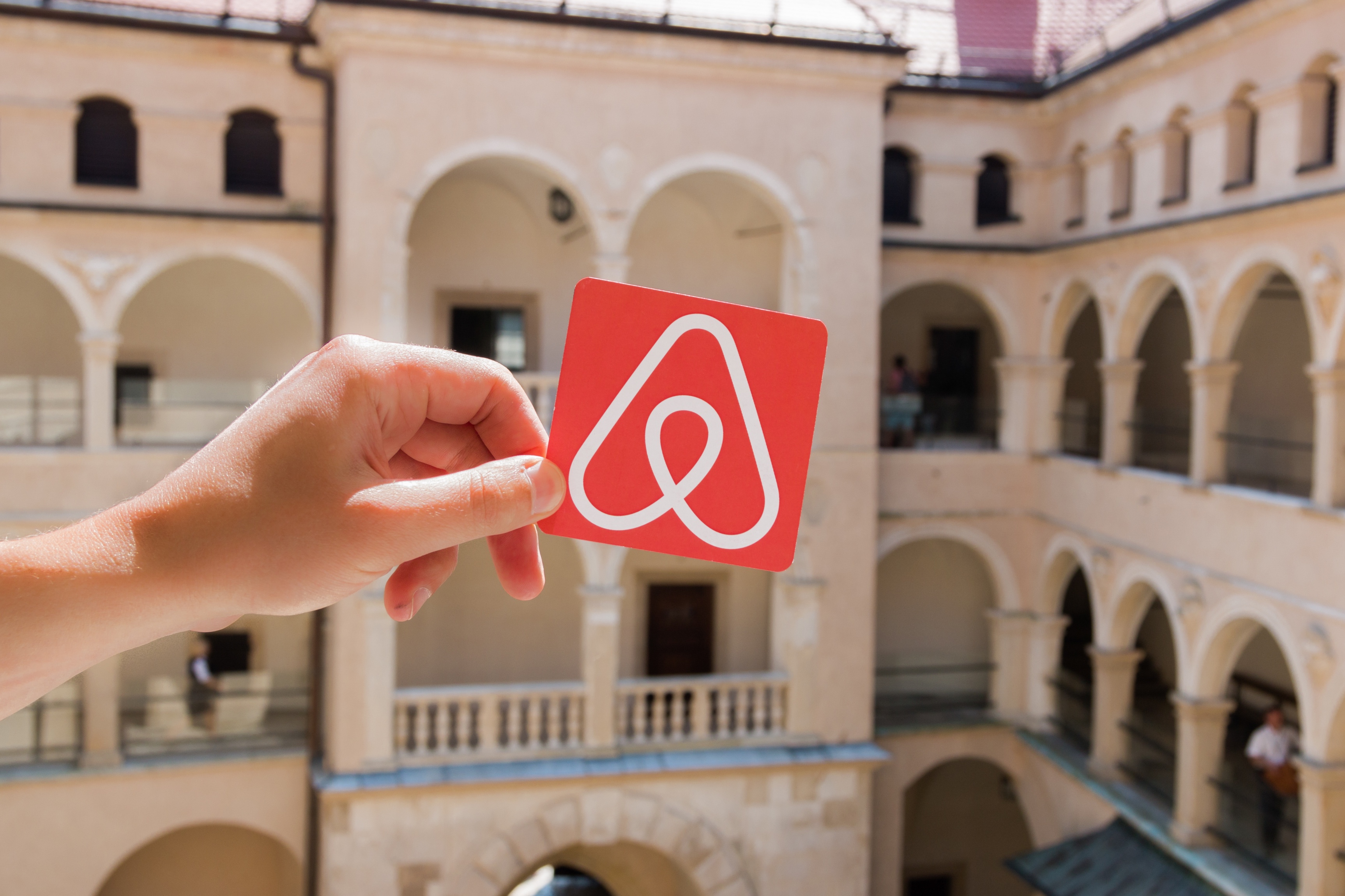
Some cities have experienced shortfall in long-term rental accommodation due to Airbnb and some hoteliers claim it lead to an uneven playing field believing it has quickly become a threat as travellers choose to book with independent hosts rather than with traditional hotels.
With that said, others would debate that Airbnb has only brought a business to the online world that was already in place long before the World Wide Web. Nevertheless, Airbnb has reshaped vacation rentals and only continues to expand.

Armed with our mobile device, everyone and everything is a quick tap away. As a result our expectations of and how we interact with business has changed. When it comes to the hotel stay, guests are looking for convenience and efficiency but also a personalised tailored experience while not compromising on quality… all at the same time. It’s not too much to ask? Right?
In the past few years the long stand established companies of hospitality technology have to rethink their
product offering as newcomers to the market began offering a plethora of more affordable agile mobile products and services that would enable them keep up with the demands of their new digital savvy guests and help them remain competitive.
For hoteliers who might feel overwhelmed, the key is to focus on and invest in hotel technologies that make the travel experience easier and more personal for guests.
New Concepts and Experiential Brands
In the last few years we have also seen the launch of new hotel concepts such as Yotel, Citizen M, Mama Shelter, Zuko etc. These new “hotels” combine style and comfort with affordability and a community atmosphere. Smart design is key with every inch of space used wisely. They offer different accommodation types from modular sleeping area that guests share to rooms and apartments for two to five people with a private bathroom and a kitchen area. They boast great locations, fast free Wi-Fi and every room is the same price.
With new lodging concepts in the market and with the rise in popularity of Airbnb, hotels have had to diversify in order to remain competitive and to ensure that they continue to appeal to the more digital savvy guest and ‘millennial’ traveller. As a result hotels have begun to expand their brand by
offering experiential versions of their brand, such as Marriott’s Moxy. They come at a cheaper price point, and often have a strong focus on lifestyle, locality and insider knowledge, compared to their bigger siblings. Similar to the concept hotels, they too have a communal emphasis; the lobby is the hub of the action boasting plenty of seating, there is usually a full-service bar, barista, kitchen style facilities usually well stocked with drinks, snacks, and full meals that’s accessible 24/7. Communal games as well as other amusing items are in place to make you want to hang out and linger.
So how much has the hotel industry changed in the last 5 years? A lot, we recon! These are the main ones that stood out for us; if we’ve missed something huge or left something out that you think should be included on the list, let us know!
Related Articles

Product Q&A | How Stayntouch PMS is Designed to Help Hotels Enhance Operations
Meet Stjepan Štajduhar, the innovative designer behind Stayntouch PMS. We sat down with Stjepan Štajduhar, our Lead Product Designer, as he reveals the design secrets

Leveraging Technology to Drive More Bookings for Your Hotel
By Justin DeRise The foundation of any hotel sales and revenue strategy lies in its distribution channels. A distribution channel is simply any forum or

3 Ways to Simplify Payments for Your Hotel & Your Guests
How an end-to-end payment provider can drive more conversions, enhance payment security, and reduce billing and support headaches. By Justin DeRise Payments may appear relatively
- Company Stories
Connect With Us

JOIN OUR NEWSLETTER
About stayntouch, "> "> get in touch, netherlands hq, copyright © 2024 stayntouch.
- Privacy Policy
- Terms & Conditions
See how StayNtouch’s Cloud PMS, Guest Mobility, and Guest Kiosk solutions deliver better results for hotels through better front & back of house communication, increased mobile touch-points, more revenue and operational efficiency, and unlimited interfaces.
Your demo will include how to:
Manage and Set Tasks Across Your Departments
Ensure Guest Satisfaction & Safety With Contactless Check-in Options
Automate Easy Upsells & Monetized Early/Late Checkouts
Set & Manage Rates/Availability
Integrate With Tools and Platforms Essential to Your Hotel And More!
Request a demo
- Search Please fill out this field.
- Manage Your Subscription
- Give a Gift Subscription
- Newsletters
- Sweepstakes
- Travel Tips
What Travel Looked Like Through the Decades
:max_bytes(150000):strip_icc():format(webp)/maya-kachroo-levine-author-pic-1-2000-1209fcfd315444719a7906644a920183.jpg)
Getting from point A to point B has not always been as easy as online booking, Global Entry , and Uber. It was a surprisingly recent event when the average American traded in the old horse-and-carriage look for a car, plane, or even private jet .
What was it like to travel at the turn of the century? If you were heading out for a trans-Atlantic trip at the very beginning of the 20th century, there was one option: boat. Travelers planning a cross-country trip had something akin to options: carriage, car (for those who could afford one), rail, or electric trolley lines — especially as people moved from rural areas to cities.
At the beginning of the 1900s, leisure travel in general was something experienced exclusively by the wealthy and elite population. In the early-to-mid-20th century, trains were steadily a popular way to get around, as were cars. The debut regional airlines welcomed their first passengers in the 1920s, but the airline business didn't see its boom until several decades later. During the '50s, a huge portion of the American population purchased a set of wheels, giving them the opportunity to hit the open road and live the American dream.
Come 1960, airports had expanded globally to provide both international and domestic flights to passengers. Air travel became a luxury industry, and a transcontinental trip soon became nothing but a short journey.
So, what's next? The leisure travel industry has quite a legacy to fulfill — fancy a trip up to Mars , anyone? Here, we've outlined how travel (and specifically, transportation) has evolved over every decade of the 20th and 21st centuries.
The 1900s was all about that horse-and-carriage travel life. Horse-drawn carriages were the most popular mode of transport, as it was before cars came onto the scene. In fact, roadways were not plentiful in the 1900s, so most travelers would follow the waterways (primarily rivers) to reach their destinations. The 1900s is the last decade before the canals, roads, and railway plans really took hold in the U.S., and as such, it represents a much slower and antiquated form of travel than the traditions we associate with the rest of the 20th century.
Cross-continental travel became more prevalent in the 1910s as ocean liners surged in popularity. In the '10s, sailing via steam ship was the only way to get to Europe. The most famous ocean liner of this decade, of course, was the Titanic. The largest ship in service at the time of its 1912 sailing, the Titanic departed Southampton, England on April 10 (for its maiden voyage) and was due to arrive in New York City on April 17. At 11:40 p.m. on the evening of April 14, it collided with an iceberg and sank beneath the North Atlantic three hours later. Still, when the Titanic was constructed, it was the largest human-made moving object on the planet and the pinnacle of '10s travel.
The roaring '20s really opened our eyes up to the romance and excitement of travel. Railroads in the U.S. were expanded in World War II, and travelers were encouraged to hop on the train to visit out-of-state resorts. It was also a decade of prosperity and economic growth, and the first time middle-class families could afford one of the most crucial travel luxuries: a car. In Europe, luxury trains were having a '20s moment coming off the design glamour of La Belle Epoque, even though high-end train travel dates back to the mid-1800s when George Pullman introduced the concept of private train cars.
Finally, ocean liners bounced back after the challenges of 1912 with such popularity that the Suez Canal had to be expanded. Most notably, travelers would cruise to destinations like Jamaica and the Bahamas.
Cue "Jet Airliner" because we've made it to the '30s, which is when planes showed up on the mainstream travel scene. While the airplane was invented in 1903 by the Wright brothers, and commercial air travel was possible in the '20s, flying was quite a cramped, turbulent experience, and reserved only for the richest members of society. Flying in the 1930s (while still only for elite, business travelers) was slightly more comfortable. Flight cabins got bigger — and seats were plush, sometimes resembling living room furniture.
In 1935, the invention of the Douglas DC-3 changed the game — it was a commercial airliner that was larger, more comfortable, and faster than anything travelers had seen previously. Use of the Douglas DC-3 was picked up by Delta, TWA, American, and United. The '30s was also the first decade that saw trans-Atlantic flights. Pan American Airways led the charge on flying passengers across the Atlantic, beginning commercial flights across the pond in 1939.
1940s & 1950s
Road trip heyday was in full swing in the '40s, as cars got better and better. From convertibles to well-made family station wagons, cars were getting bigger, higher-tech, and more luxurious. Increased comfort in the car allowed for longer road trips, so it was only fitting that the 1950s brought a major expansion in U.S. highway opportunities.
The 1950s brought the Interstate system, introduced by President Eisenhower. Prior to the origination of the "I" routes, road trippers could take only the Lincoln Highway across the country (it ran all the way from NYC to San Francisco). But the Lincoln Highway wasn't exactly a smooth ride — parts of it were unpaved — and that's one of the reasons the Interstate system came to be. President Eisenhower felt great pressure from his constituents to improve the roadways, and he obliged in the '50s, paving the way for smoother road trips and commutes.
The '60s is the Concorde plane era. Enthusiasm for supersonic flight surged in the '60s when France and Britain banded together and announced that they would attempt to make the first supersonic aircraft, which they called Concorde. The Concorde was iconic because of what it represented, forging a path into the future of aviation with supersonic capabilities. France and Britain began building a supersonic jetliner in 1962, it was presented to the public in 1967, and it took its maiden voyage in 1969. However, because of noise complaints from the public, enthusiasm for the Concorde was quickly curbed. Only 20 were made, and only 14 were used for commercial airline purposes on Air France and British Airways. While they were retired in 2003, there is still fervent interest in supersonic jets nearly 20 years later.
Amtrak incorporated in 1971 and much of this decade was spent solidifying its brand and its place within American travel. Amtrak initially serviced 43 states (and Washington D.C.) with 21 routes. In the early '70s, Amtrak established railway stations and expanded to Canada. The Amtrak was meant to dissuade car usage, especially when commuting. But it wasn't until 1975, when Amtrak introduced a fleet of Pullman-Standard Company Superliner cars, that it was regarded as a long-distance travel option. The 235 new cars — which cost $313 million — featured overnight cabins, and dining and lounge cars.
The '80s are when long-distance travel via flight unequivocally became the norm. While the '60s and '70s saw the friendly skies become mainstream, to a certain extent, there was still a portion of the population that saw it as a risk or a luxury to be a high-flyer. Jetsetting became commonplace later than you might think, but by the '80s, it was the long-haul go-to mode of transportation.
1990s & 2000s
Plans for getting hybrid vehicles on the road began to take shape in the '90s. The Toyota Prius (a gas-electric hybrid) was introduced to the streets of Japan in 1997 and took hold outside Japan in 2001. Toyota had sold 1 million Priuses around the world by 2007. The hybrid trend that we saw from '97 to '07 paved the way for the success of Teslas, chargeable BMWs, and the electric car adoption we've now seen around the world. It's been impactful not only for the road trippers but for the average American commuter.
If we're still cueing songs up here, let's go ahead and throw on "Lifestyles of the Rich and Famous," because the 2010s are when air travel became positively over-the-top. Qatar Airways rolled out their lavish Qsuites in 2017. Business class-only airlines like La Compagnie (founded in 2013) showed up on the scene. The '10s taught the luxury traveler that private jets weren't the only way to fly in exceptional style.
Of course, we can't really say what the 2020 transportation fixation will be — but the stage has certainly been set for this to be the decade of commercial space travel. With Elon Musk building an elaborate SpaceX rocket ship and making big plans to venture to Mars, and of course, the world's first space hotel set to open in 2027 , it certainly seems like commercialized space travel is where we're headed next.
:max_bytes(150000):strip_icc():format(webp)/Ellie-Nan-Storck-00d7064c4ef24a22a8900f0416c31833.jpeg)
Related Articles
- Awards and Recognition
- Board of Directors
- Client Stories
- Corporate Social Responsibility
- Diversity, Equity and Inclusion
- Protecting Our Planet
- Enabling People to Outperform
- Caring for Our Communities
- Ethics, Integrity and Compliance
- Delivering Value to Our Clients
- From the CEO
- South Africa
- United States
- The Philippines
- United Arab Emirates
- United Kingdom
- Management Team
- Press Releases
- WNS in the News
- Our Proposition
- Vision and Mission
- Generative AI
- ESG Analytics
- Augmented Data Management and Data Governance
- BI & Visualization
- Big Data Engineering
- Data Governance Intelligent Cloud
- Data Sciences
- Embedded Analytics
- Fraud And Risk Analytics
- HR Data Analytics
- Customer Loyalty Analytics
- Marketing Analytics Services
- Insurance Analytics
- Retail Media
- Centers of Excellence
- Customer Experience Consulting
- HIFFI – Home Insurance in a Jiffy
- Digitally Simulated Training Environment
- WNS Open Talent
- Decision Support
- Financial Planning and Analysis (FP&A)
- CFO Advisory Services
- WNS Duplicate Invoice Detector
- WNS Forecaster and Predictor
- WNS Journal Entry Analytics
- WNS Risk and Audit Analytics
- WNS Working Capital Analytics
- Outperforming CFO Framework (OCF)
- Procure-to-Pay (P2P)
- Quote-to-Sustain (QtS)
- WNS TRAC eClose
- Anti-Money Laundering and Know Your Customer
- Financial Crime
- Fraud and Risk Analytics
- Fraud Management Services
- Regulatory Compliance and Risk Reporting
- Third-Party Risk Management
- Compensation
- HR Analytics
- Learning and Performance Management
- Payroll Administration
- Recruitment Services
- Workforce Management
- Legal Services
- Category Management
- Contracting Services
- Digital Solutions
- Procure-To-Pay Services
- Sourcing Services
- Supplier Management
- Supply Chain Management
- Robotics & Digital Automation TRAC
- Supplier Portal
- Technology Services
- WNS IP Labs
- Insurance TRAC
- RPA & Intelligent Automation TRAC
- Security TRAC
- Travel TRAC
- Analytics Incubation Center
- Big Data Analytics
- Data Sciences Group
- Process Maturity Model
- Value Innovation Program
- WNS Transition
- Workforce And Productivity Management
- Industry Segments
- Capital Markets Operations
- Research and Analysis Services
- Trade Finance
- Financial Crime and Compliance (FCC)
- FinTech Services
- Mortgage Operations
- Retail Banking
- Banking Analytics
- Banking and Financial Services Consulting
- Credit Risk Management and Underwriting Services
- Customer Experience in BFS
- Finance & Accounting for Banks & Financial Institutions
- Governance, Risk and Compliance
- Model Risk Management
- Customer Acquisition and Customer Experience Management Services
- Driving Insight-led Decisions
- Realizing Your Energy and Utility Digital Transformation Goals
- Carbon Accounting
- Digital Customer Experience Services
- Digital Meter-to-Cash
- Smart Collection and Debt Management Services
- Elevating Business Operations with Shared Services
- Customer Management Services
- Energy & Utilities Analytics
- Shared Services
- Customer Analytics
- Data Management
- Revenue Assurance
- Risk Analytics
- Video and Voice AI Solution
- Benefits Administration
- Clinical Operations
- Healthcare Claims
- Medical Bill Review
- Member Engagement Services
- Provider Lifecycle Management
- Revenue Cycle Management
- Telehealth Services
- Content and Information Publishers
- Executive Search Services
- Hi-Tech Firms
- ID and Background Verification Firms
- Legal Service Firms
- Risk and Compliance Service Providers
- Design Services
- Hi-Tech & Professional Services Analytics
- Product Data Operations
- Revenue Operations
- Pension Risk Transfer
- Lloyd’s of London Market
- Claims Prevention
- Straight-through Processing (STP)
- Insurance Finance & Accounting
- WNS Claims 360
- Voice AI Solution
- Finance and Accounting
- Procurement
- Research and Analytics
- Medical Affairs
- Pharmacovigilance
- Competitive Intelligence
- Forecasting
- Business Intelligence
- Marketing & Pricing Analytics
- Sales Analytics
- Commercial Assessment
Customer Experience
- Finance & Accounting
- Supply Chain Management (SCM)
- CPG & Retail Analytics
- Integrated Sales Order Management
- Forwarders and Brokers
- Safety and Compliance
- WNS Air Cargo Optimized Solutions Suite (ACOSS)
- WNS Document Verification Solution
- WNS Volume Surge Solution
- Hospitality Companies
- Online Travel Agencies
- Travel Management Companies
- Travel and Leisure Analytics
- WNS Ancillary Revenue Optimizer Suite
- WNS Post-booking Servicing Solution
- Verifare Plus
- Private Equity
- WNS Co-creation Labs

Perspectives
Top 5 Travel & Leisure Trends in 2025
16 november 2022, a wns perspective.
As the travel and leisure industry faces a post-pandemic revival, it must be aware of customer expectations in a digitally connected world
Human-centered technology will be the key to augmenting customer experience
While hyper-personalization will play a crucial role in the growth of the industry, sustainable travel for social and planetary good will become equally significant
The travel and leisure industry has experienced unprecedented turbulence. Two years on from the pandemic’s outbreak, travel is ready to be reset. Enterprises are bracing for a post-vaccine travel boom, with a strong drive from consumers to rediscover the world.
As global demand for travel and leisure services continues to build momentum, the industry must keep pace with customer expectations in a digitally connected world. Promisingly, industry leaders used time spent ground to a halt wisely, recalibrating, embracing innovative technologies and developing new capabilities.
Research from WNS and Corinium Intelligence demonstrates the digital progress made within the travel industry. 1 A significant 40 percent of leaders say automation projects accelerated by at least three years due to the pandemic, while 60 percent say their organizations have completed client-facing digital transformation efforts.
Here, we explore the five trends in travel that will change the way businesses function in 2025.
Elevated Expectations
Travel has never been more important to consumers. Research shows that 87 percent of people globally agree that having a trip planned in the future gives them something to look forward to. 2 As pent-up demand is unleashed post-pandemic, the next five years will see heightened expectations among travelers as they seek to make up for lost time.
Industry leaders are embracing innovative technologies to meet these enhanced expectations and ensure customers aren’t disappointed. Virtual Reality (VR) is one such tool, with a new wave of organizations offering immersive experiences 3 into a destination, so travelers can ‘try before they buy.’ For example, Chile’s tourism board launched a campaign that enabled people to experience the country at home, from its music and films to its wine and agricultural heritage. 4
Digital transformation is also helping companies surpass expectations behind the scenes, from using the Internet of Things (IoT) to improve flight schedule accuracy to leveraging analytics , Artificial Intelligence (AI) and Machine Learning (ML) to glean better insights into evolving customer preferences. 5 Domain-led hyperautomation platforms , meanwhile, are helping drive operational agility and responsiveness by automating crucial and complex processes. 6
Hyper-personalized Profiles
The pandemic’s transformation of travel has rendered much historical data invalid. However, enhanced digital capabilities are enabling businesses to harness customer data in new ways, understand them like never before, and deliver the kind of hyper-personalization that can evoke long-lasting brand advocacy among customers.
Hyper-personalization requires rich customer insights and the ability to connect the dots. Advances in capturing and collecting data — increasingly in real-time — are helping businesses tap into new data sources, consolidating this data through Master Data Management (MDM) systems 7 that enable a single source of customer truth to emerge.
By 2025, personalized services will enable most future-facing brands to gain and sustain loyalty in the long term. As Markus Schreyer, senior vice-president of Design Hotels, says: “Moving forward, we will be more in control of our time. Travelers will not be limited, and the currency for brands in the future will be how much time travelers will spend with them.” 8
Augmented Expertise
After a period of unprecedented turbulence, society is now experiencing an epidemic of widespread mistrust in global institutions. In response, the next five years will see a return to the experts as consumers seek out guidance and trusted voices in a noisy landscape.
Within travel, this means a human touch will be more important than ever. Recent research shows this in action, with 44 percent of US travelers who rarely or sometimes used travel advisors in the past saying they were now more likely to use one post-pandemic. 9 Instead of a return to the old days, however, 2025 will see human employees augmented by the power of digital technologies re-defining operational excellence.
The most forward-looking players in the Online Travel Agency (OTA) space are already harnessing digital to transform employees into intelligent personal travel assistants for the new-age customer. One OTA, for instance, has created a microsite to accompany its main offering, which allows customers to browse and connect with travel experts across the US. 10
Before & After Travel
In an economy driven by experiences over products, consumers now want their holidays to start from the moment they book, adding to the anticipation of traveling. Similarly, they don’t want their trips to end when they arrive home. For travel and leisure businesses, this is driving a new way to maintain loyalty and long-standing relationships with customers through elevated ancillary services.
Both airlines and hospitality brands are betting heavily on predictive analytics, digital, AI, ML, Natural Language Processing (NLP) and IoT to help them win the ancillary game. With the right data infrastructure, behavioral profiling 11 enables companies to identify the right ancillaries to be offered through the right channels.
By 2025, ancillary services will have evolved to offer ultimate convenience. One Swiss airline is paving the way, offering its passengers the option of having their baggage collected at home before they leave for the airport. 12 US-based hotel Zero George, meanwhile, has joined forces with meal delivery service Sakara to offer a meal plan that aims to establish healthy eating routines in the days following a holiday. 13 “We wanted to offer a package that extended when guests get back home,” says Vinson Petrillo, executive chef at Zero George. “It alleviates the post-vacation blues and gives travelers something to look forward to when they get back.”
Conscious Escapes
Sustainable travel is more important than ever. With the world no longer the playground it once was, consumers and companies alike are moving away from the encouragement of gratuitous destination-hopping and re-focusing their behaviors on planetary and social good.
One recent research 14 shows this in action, revealing that while 83 percent of global travelers think sustainable travel is vital, 49 percent believe there aren’t enough options available.
The next five years will see companies working to change this perception — and offering greater transparency represents one means of doing so. Aerial, for example, is a new application that lets people understand their carbon footprint from travel — flights, ride-sharing or trains — and helps them offset its impact through conservation projects. 15
Alongside sharing data and insights, Aerial also has a community aspect that encourages users to invite friends and compare data, adding a gentle layer of competition to inspire more positive habits. OTAs have an opportunity to build similar functionality into their services and platforms, encouraging conscious options for customers for whom sustainable travel indexes highly.
To meet heightened expectations, the travel and leisure industry must embrace insight-led transformation using cutting-edge digital solutions. Doing so can drive operational agility, help customers feel understood, re-define customer service excellence, and help identify new revenue streams.
(This article was created in collaboration with The Future Laboratory)
Know more about WNS’ digital-led solutions for the travel industry
References:
https://www.wns.com/perspectives/whitepapers/whitepaperdetail/221/business-transformation-after-the-digital-tipping-point
https://www.businesswire.com/news/home/20210309005322/en/American-Express-Launches-2021-Global-Travel-Trends-Report
https://www.wns.com/perspectives/blogs/blogdetail/438/digitally-disrupted-travel-using-data-to-gain-a-competitive-advantage
https://www.travelpulse.com/news/destinations/chile-launches-campaign-to-inspire-future-travel.html
https://www.wns.com/perspectives/blogs/blogdetail/64/re-connecting-the-world-through-a-digital-first-lens
https://www.wns.com/perspectives/blogs/blogdetail/193/how-to-elevate-your-digital-transformation-program-with-hyperautomation
https://www.wns.com/perspectives/articles/articledetail/176/mastering-the-art-of-data-management-to-transform-customer-engagement
https://www.thefuturelaboratory.com/blog/the-post-pandemic-future-of-travel
https://www.travelpulse.com/news/travel-agents/asta-sandals-reveal-key-travel-trends-on-national-travel-advisor-day.html
https://internova.com/the-future-of-travel-is-human/
https://www.wns.com/perspectives/articles/articledetail/439/flights-to-fridges-leveraging-analytics-to-increase-airline-ancillary-revenue
https://www.swissport.com/en/news/current-news/2021/airportr-and-swissport-announce-global-strategic-partnership
https://www.travelandleisure.com/trip-ideas/yoga-wellness/zero-george-the-works-sakara-meal-kit-delivery-partnership-holy-city-detox
https://globalnews.booking.com/bookingcoms-2021-sustainable-travel-report-affirms-potential-watershed-momentfor-industry-and-consumers/
https://www.fastcompany.com/90567394/how-much-carbon-has-your-travel-created-this-app-scans-your-inbox-to-figure-it-out
Join the conversation
Related To:
Similar perspectives, intelligent innovation is key to managing new-age ota customers.
31 December 2019
Re-imagining Customer Loyalty: Insights from the CX Retail…
09 August 2023
Travel & Leisure
Propelling Travel and Hospitality Forward with a Hybrid…
21 March 2023
Latest News

Alain St.Ange on his way to “Pearl of Africa Tourism Expo” (POATE) in Uganda

Celebrity Cruises first-ever Edge Series Alaska itineraries set sail

UN Tourism launches digital self-assessment tool for rural destinations

Wyndham Hotels & Resorts: Expanding horizons in the Middle East and Africa

The cultural casino tour: Exploring local traditions and gaming hubs

Expat health insurance: Your global coverage guide

Bahrain Airport Company to host the Worldwide Airport Lawyers Association (WALA) conference in Bahrain

Brittany Brathwaite of Barbados honored at CHRIS Conference

Air Canada significantly increases service to Ottawa

Kvarner recommended for the title of European Region of Gastronomy 2026

Five emerging trends in the travel industry

Since the emergence of COVID-19, travel has taken on a different nature. There has been a 93% decrease in the number of air passengers, ground transportation has also been largely reduced, and cruises have been cancelled, as people are cautious of crowded places. What transport modes will rebound the fastest once the COVID-19 pandemic is over?
Travelers are shifting to private properties instead of crowded hotels and resorts. Many prefer driving to flying and have returned to using travel advisors and trip insurance. As the industry is relentlessly transforming, businesses need to follow emerging trends to stay afloat.

2. Booking windows In the face of uncertainty, it’s difficult for tourists to plan their trips in the same way as before, which affects booking windows. To help customers make purchases with fewer risks, travel companies have changed the terms of return or exchange. For example, United Airlines offers a flexible window on new and existing bookings until September 2020.

- Domestic flights. The proportion has barely changed: advanced booking to 15 days for business trips and over 91 days for family trips are still widespread. In the meantime, the departure window for solo travelers and couples moved from 31 to 60 days to either advanced booking (up to 15 days) or over 91 days.
- Domestic hotels. For business travelers, advanced bookings up to 15 days are still the most popular, with other departure windows bringing similar volume. Family trips moved from advanced bookings to a departure window over 91 days, while solo travelers and couples booked hotels up to 15 days before departure.
You can also check data for EMEA, APAC, and China .

4. Mobility trends Since the emergence of COVID-19, travel has taken on a different nature. There has been a 93% decrease in the number of air passengers , ground transportation has also been largely reduced, and cruises have been cancelled, as people are cautious of crowded places. What transport modes will rebound the fastest once the COVID-19 pandemic is over?
Air travel is massively reduced and is expected to remain at less than 30% of last year’s capacity for the remainder of 2020, regaining its former level only by 2022. Flights might first open up between safe corridors, such as Germany to Austria, for example. While some travelers canceled their vacation plans for at least six months, others are seeking low airfares for existing flights and are ready to travel as soon as the current restrictions are lifted.
Ground transportation has also experienced up to a 90% drop in major cities around the world, as people are being asked to avoid crowded places and maintain self-isolation. Operators have to comply with strict hygiene protocols, limit the number of passengers, and consistently check their health.
Private mobility may be on the rise over the long term, as travelers feel safer in privately owned vehicles and don’t want their trip to depend on flight cancellations. As a result, drive-to destinations will increase in popularity. The Longwoods survey showed that 22% of those who changed their vacation plans for this year switched their form of transportation to driving instead of flying.
Cruises will also become safer by introducing more procedures to control onboard illness and extend onboard medical capabilities.
5. Products What kinds of products will see a surge in the coming months and years?
- Vacation rentals. For social distancing reasons, hotels and resorts are seeing a large decrease in bookings. Heightened guest turnover makes it hard for people to stay isolated and for hotel staff to disinfect rooms. Thus, private accommodations will find greater favor, as their owners are now enhancing safety measures, such as automatic locks, contactless food delivery, and space out rental periods. For example, the insurance company InsuranceMyTrip has already seen a 6% increase in vacation rentals in comparison to 2019, as well as drop in hotel bookings.
- Car rentals. As people are increasingly opting for close to home and drive-to destinations, demand for car rentals is expected to increase. Cars simultaneously allow travelers to stay isolated and move around as they please, thus more and more people will opt for driving over flying.
- Flexible bookings. To encourage people to book trips, companies around the world are introducing major changes to their policies, such as last-minute cancellations. Stronger demand is expected for the winter season , with reservations for Thanksgiving, Christmas, and New Year being up by 38%, 40%, and 23%, respectively, compared to 2019. This, naturally, will affect the budget allocations of travel companies, as they’ll need to be able to reimburse canceled bookings and preserve cash at all times.
- Travel insurance. Thanks to the rising health and safety concerns, travelers are increasingly aware of the importance of travel insurance. Up to 30% tourists are expected to buy travel insurance before hitting the road, say industry experts. Furthermore, some companies have upgraded their insurance policies and included “cancel for any reason” and medical evacuation options.
- Travel advisors. Canceling a trip and obtaining reimbursement has proven difficult and time-consuming, so travelers are now turning to the services of travel agents. Not only are agents able to help savvy tourists plan a trip and better navigate cancellation policies, but they also support travellers to reassess their personal finance and travel goals.
6. Types of trips
- According to industry experts, travelers are more likely to opt for these types of trips during the remainder of the year:
- Close to home trips and drive-to destinations.
- Multi-generation trips. Many families haven’t been able to meet up because of quarantine for a few months and travel agents are expecting multi-gen trips to rise significantly once travel is safe again.
- Longer trips. More and more travelers now prefer to book up to nine-day stays instead of the average three-and-a-half to five-day rental periods from before the pandemic.
- Vacations requiring advanced planning. Travel agents report a rise in vacations that require booking a year or more in advance. For example, African safaris, honeymoons, etc. People have been put on hold and want to have their dream vacation happen as soon as possible.
- Trips to remote places. Tourists will also be likely to open up to more isolated and less populated destinations. For example, traveling to a country with high population density, like India, will be more dangerous than travelling to Italy, for instance. – Remote destinations like Africa should expect an increase in tourist inflow, according to Jessica Nabongo , founder of the travel firm Jet Black .
Tatiana Buyanova
Tatiana Buyanova is Head of Business Development at Travelpayouts .
Related posts

Launch of new travel metasearch for US market

Travelpayouts introduces the first automatized partnership platform for travel brands
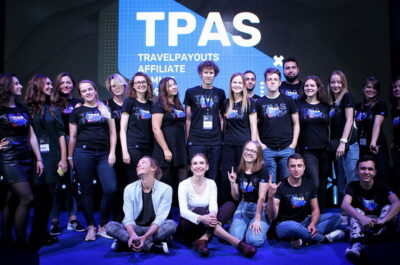
How Travelpayouts created the first affiliate marketing platform for the travel industry

Travelpayouts supports its community during COVID-19
Previous post, travel intent and demand recovering in some european markets says sojern, what to wear on an outdoor adventure.

Regional tourism experts adopts new regulation for ECOWAS tourist accommodation establishments

Tourism’s impact on local community celebrated during National Travel and Tourism Week May 19-25

International tourism in Scotland returns to pre-pandemic growth

Embraer and Eve sign MoU with Groupe ADP aiming to strengthen operations at Paris-Le Bourget Airport

Coca-Cola Pizza Village Event goes global: Celebrating Italian cuisine

Buddie: Revolutionizing tourism in Saudi Arabia with cutting-edge technology and sustainable practices

Cretan resort brand launches traditional house for Summer 2024 season

Companies seen hiring for roles to lead sustainable practices in travel and tourism industry, finds GlobalData

IAEE announces International Excellence Award winner award presentation

New Courtyard Hotel by Marriott Quito will be built at the Mariscal Sucre International Airport

Claire Smyth of Conference Partners International wins the 2024 IAPCO Innovation Award

CBRE expects RevPAR growth to improve in H2 2024, driven by holiday and international travel

Lopota Lake Resort & Spa in Georgia’s Kakheti wine region announces expansion

Sunny 20th anniversary of TAP Air Portugal connecting Prague to Lisbon

First anniversary of Air Serbia’s Chicago service: Over 40,000 passengers on flights between Belgrade and Chicago in a year

LanzaJet announces first-of-a-kind $20m. investment from global airport operator Groupe ADP

The where, why, and how of 2024 Summer travel, revealed in new forecast from HomeToGo

Pegasus launches Direct Ankara – Dublin route


Marriott International announces first property in Hudson, Buenos Aires Province, Argentina

Former Kerten Hospitality BD named Director of Development at growing hybrid hospitality concept, 21 House of Stories

Innovative aviation liquid hydrogen project launched

Hawks Cay Resort welcomes Joshua Torai as new Managing Director

IAG launches the eighth edition of its Hangar 51 Accelerator programme

Dubai’s Samana Developers appoints Dow Jones Affiliated Complyfin to implement AML/CFT compliance across operations

BestPrice Travel to promote the image of Vietnam at New York’s times square

How private MCAT tutors address specific weaknesses or areas of improvement for medical school applicants

Marriott International celebrates the 2024 J. Willard Marriott Awards of Excellence honorees

Landal GreenParks UK sees big growth in inbound holiday market

Next generation leaders earn their seat at the table at IMEX Frankfurt

RDB Hospitality expands luxury services with addition of Lenox VIP Global

Ronald Leitch appointed Chief Operating Officer of AGS Airports

NH Collection’s debut in Finland continues a proud legacy of legendary hospitality

Deepak Chopra aboard SH Diana in New York as Swan Hellenic announces two new “Explore & Restore” cruises in Brazil

VisitEngland joins forces with AccessAble to promote new tourism accessibility guides

eSIM Go launches global travel eSIM service in partnership with SWISS

Impress your Airbnb guest on their next vacation

McDreams becomes Europe’s first hotel group to roll out 100% AI-powered phone system integrated with Like Magic

Europeans defy costs and conflicts to embrace travel in Summer 2024

SAS expands connectivity to Scandibavian Winter destinations

airBaltic and Bulgaria Air start codeshare cooperation

Sofitel Al Hamra Beach Resort opens its doors on the shores of Ras Al Khaimah

Prague Airport and Korean Air celebrate two decades of Seoul connection

Understanding Nevada’s modified comparative negligence law

Exhibitions & Conferences Alliance welcomes ICCA as its newest Alliance partner

BEONx and JUYO Analytics partner to streamline data access for hoteliers

Good Travel Management announces strategic partnership with Trinity Event Solutions

Finnair resumes flights to Tartu

Afreximbank funds $30m. for Silversands Hotel expansion in Grenada

AMG survey reveals consensus on importance of training but not on how to develop new advisor talent

“Tauck On Tour” events coming to UK travel advisors this Fall

Global Travel Marketplace expands and rebrands as Connecting Travel Marketplace

Sporting events elevated Madrid hotel performance in April

easyJet to open 10th UK base at London Southend Airport next spring signalling continued UK growth

Middle East hotel construction pipeline rises to 612 projects/144,222 rooms at Q1 2024

The Vinoy Resort and Golf Club hires Chris Major as Golf and Club Operations GM

IEG: The Board of Directors approves the consolidated interim report as of March 31, 2024 – Revenues at 88.9m. euros

U.S. Travel applauds passage of Long-term FAA Renewal Bill

Travel and tourism sector deal activity down by 13.5% YoY in January-April 2024, finds GlobalData

THE WELL appoints Zeev Sharon as Chief Development Officer to lead integrated wellness brand’s global expansion

Icelandair transported more than one million passengers this year

Qatar hotel market sees significant performance boost during Eid al-Fitr
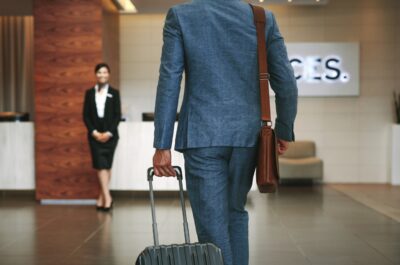
New research highlights toll of business travel on mental health and a need for more support from employers

Avianca will only transport passengers aged 14 or younger who travel with their parents or a responsible adult

CEIR releases Q1 2024 index results, growth of U.S. B2B exhibition industry continues

Luxury digital concierge company The Prelude to hit $20m in first year sales

Celebrity Cruises’ revolutionary ship Celebrity Apex homeports in Southampton for first-ever season from the UK

Oklahoma Tourism and Recreation Department launches new “Find Yourself in Oklahoma” campaign

Transportation methods from Alicante airport to Benidorm

Oceania Cruises launches innovative and free marketing solution for trade partners

TAAG assumes exclusive operation od the Luanda – Lisbon route with its international fleet

Hotel rewards programs are going greener, extending across brands, new report finds

Pegasus launches direct route from Istanbul to Bratislava

MIA starts 2024 with record growth and an A+ bond rating

Time Out Market to open in Budapest

JW Marriott and Flamingo Estate debut a global brand partnership to guide travelers on a sensorial journey rooted in well-being

Yuppi Group leverages Turkish destination specialism to launch B2B hotel platform Pax2Night

Reputable merchant advance companies for business owners

Best April in Katowice Airport’s history

Erna Solberg named Havila Pollux

Soaring passenger traffic, longer stays: Mastercard Economics Institute on travel in 2024

Consistency in differentiation: How GCC is building the future of their travel destinations

Carnival Corporation rolls out SpaceX’s innovative Starlink across entire global fleet

Dream Yacht Sales welcomes Jeremy Tutt as Global Yacht Sales Director

Tribute Portfolio debuts in the United Arab Emirates with The First Collection at Jumeirah Village Circle, a Tribute Portfolio Hotel

Wellness real estate market reached $438bn. in 2023 and is forecast to more than double to $913bn. by 2028

Sojern expands its guest experience solutions to Europe

Waymore’s Guest House & Casual Club announces new General Manager

Forty-five percent of the hotel projects in Europe’s total pipeline are under construction at the end of Q1 2024

New Grill Room General Manager and Sommelier at The Windsor Court Team

Corazón Cabo Resort & Spa appoints new Director of Sales and Catering

Travel demand remains resilient in Q2 2024: TUI achieves record revenue of 3.6bn euros

First Club Med in the Middle East announced, $100 million development

Higher Lake Mead water levels bolster business for marina, boating operator

Elevate your travel experience with essential tech on a budget

Google rolls out enhanced AI-driven travel planning features

Game changers: Trends shaping college sports today

VisitScotland Connect 2024 hailed a success

Fraport Group continues growth in First Quarter of 2024

Travelport and WestJet confirm new long-term Content agreement

Sights of Belek you must visit

How to make the most of your trip to Napa Valley

South Western Railway hosted the rail industry’s first national safeguarding conference

Sabre Corporation reinforces partnership with ACI blueteam Spa with new contract

Trip.com Group and Rezdy join forces to offer new travel experiences around the world

The Ritz-Carlton, San Francisco appoints new General Manager

Berlin celebrates five years of Sustainable Meetings Berlin at IMEX

Over 200,000 additional seats from Shannon Airport this summer to destinations across Europe and the USA

Destination DC highlights impactful role in hosting global meetings at IMEX Frankfurt

WTTC and IC Bellagio partner for new consumer campaign

PCMA and The Strategic Alliance of the National Convention Bureaux of Europe announced Convene 4 Climate

Hotel Equities selected to manage first Hampton by Hilton-branded hotel in St. Thomas, U.S. Virgin Islands

Abra Group reaches agreement for strategic investment in Wamos Air

Chisinau International Airport will be the host of the International Aviation Conference

Mews acquires HS3 Hotelsoftware to bolster German expansion

Paradies Lagardère announces Q1 restaurant openings at Atlanta, Boston and Oklahoma City Airports

Generation Voyage monetizes content through affiliate sales powered by Stay22

Celestyal finalises agreement with Abu Dhabi and AD Ports Group

New dates for Essence of Africa, the continent’s premier buyer forum

LanzaJet announces Doreen Pryor as Chief Financial Officer

Neptune Luxury Resort announces culinary collaboration with acclaimed Italian chef Salvatore Andolina

Fontainebleau Miami Beach to unveil all-new coastal convention center in Q4 2024

Cvent announces Top Meeting Destinations and Top Meeting Hotels in Europe for 2024

Prague remains among world’s most sought-after meeting destinations

Over 260 applications from 60+ countries: Best Tourism Villages 2024 adventure kicks off

Seychelles and Mauritius Tourism met at the Arabian Travel Market (ATM) in Dubai

IRF and SITE, along with research partner Oxford Economics, launch 2024 edition of incentive travel survey

Explore Worldwide furthers expansion in North America with new team and Toronto office

Colletts Travel evolves with reservation module new technology from Dolphin Dynamics

Skyscanner launches Savvy Search – its new generative AI travel planning tool

BCD Meetings & Events launches three-year strategic plan following momentus growth

RiminiWellness 2024: Shaping the future of wellness and fitness industry

Traveloka becomes first Platinum Sponsor of GSTC to promote sustainable tourism

The Brunelleschi Hotel gets the prestigious Michelin Key

Minor Hotels appoints Lokesh Kumar as Vice President of Development for the Middle East

onefinestay unveils villas in Provence

Outdoorsy launches weather guarantees for RV rentals with “Roamly Weather by Sensible”

UK awards Alain St.Ange the “Nelson Mandela Leadership Award”

Resorts World Cruises to homeport in the Arabian Gulf

Dondra Ritzenthaler Takes the Helm as Chief Executive Officer of Azamara Cruises

Storrington Collective is appointed to handle the UK Public Relations for the entire Cotton Lifestyle Group

ATL Airport District appoints Rylee Govoreau as Sales Manager

Aeronology accepted into global luxury travel group Virtuoso

The world of travel and tourism: A journey through cultures and destinations

Grace La Margna St Moritz joins American Express Fine Hotels + Resorts

Digital Markets Act: European Commission designates Booking.com as gatekeeper

Al Ansari Exchange signs a strategic partnership with Etihad Airways

ASM Global Europe to open four new UK venues by 2027

Oman’s Travel & Tourism sector predicted to reach new heights in 2024, says WTTC report

Air Serbia launches contest for company mascot

Royal Caribbean’s Utopia of the Seas begins tests at sea

Traveazy Group unveils the future of B2B travel solutions at ATM 2024

Aena’s airports in Spain registered more than 25.6 million passengers in April

Qatar’s Travel & Tourism sector achieves record growth in 2024

Casablanca: A must-visit destination in 2024 according to TripAdvisor

Caribbean Week 2024 set to sparkle in New York City

BLS International secures visa outsourcing contract with Portuguese Embassy in Morocco

Caribbean tourism flourishes: Insights from CHTA at CHRIS 2024 Summit

OsaBus invested 1m. euros in new buses to expand services in Barcelona

Illinois Office of Tourism announces international visitor growth in 2023

Hyatt doubles down on Latin America growth with 30+ planned openings through 2027

The Emirates Group achieved record profits and revenue in 2023-24, driven by robust demand and strategic global expansion

Mondee Holdings announces record Q1 2024 financial results, highlighting AI-driven growth in the travel sector

The Vines Resort & Spa announce villa expansion

HyperPay showcased innovative hospitality service at Arabian Travel Market 2024

Ethiopian Airlines Group assumes management role for Ethiopia’s new Legacy Lodges through Ethiopian Skylight Hotel

ACI World welcomes new Vice Presidents to lead Events & Commercial Services, and Safety, Security, and Operations

10 TRAVEL TRENDS FOR 2018
TRAVEL’S MOST BUZZWORTHY DESTINATIONS, EMERGING TRENDS AND SOUGHT-AFTER TRIPS.
By Libby Shabada
With the new year fast approaching, now is the time to find out what's up and coming in travel. We’ve tapped into the latest industry news, insights and expert advice to predict what awaits travelers in 2018. Uncovered were exciting trends – from adventures that explore new frontiers to trips that challenge traditional tourism.
For the first time, Intrepid Travel presents our annual Top 10 Travel Trends for 2018.
TRAVEL TO THE MIDDLE EAST WILL MAKE A BIG COMEBACK
The lost city of Petra, Jordan.
Defying headlines, the Middle East’s growth in international arrivals this year has surpassed heavy-hitters like Europe and South America, and it’s not slowing down. According to a recent World Tourism Organization (UNWTO) Travel Barometer , the Middle East is the fastest-growing travel region in the world – with the Palestinian territories leading the pack at 57.8% growth in international visitors. Travel companies are taking note. Hilton Worldwide now has seven new Egypt hotels in its pipeline while celebrated street artist, Banksy, also opened a highly-anticipated hotel in Bethlehem. In 2018, Intrepid Travel will be launching seven new Middle East tours , including ones in Iran and Jordan .
EUROPE’S NEW FRONTIERS WILL HELP ALLEVIATE OVERTOURISM
Orheiul Vechi Cave Monastery complex in Moldova.
As Europe’s hot spots, such as Italy and Croatia, continue to experience a capacity crunch , tourism industry stakeholders are looking to less-traveled destinations in the continent to redistribute the demand. Where exactly? Belarus, which now offers five-day visa-free travel , and Moldova, which launched new routes in November through Air Moldova , to name a few. Intrepid Travel is adding departures in Belarus , Cyprus , Moldova and Poland to its existing Europe range. Expect to hear more buzz about lesser-discovered Europe in 2018.
MODERN FAMILY DYNAMICS WILL INNOVATE FAMILY TRAVEL
Family travel at Skógafoss waterfall in Iceland.
In a recent Stats Canada survey , lone-parent families now make up 19.2% of Canadian households with children, and the United Kingdom’s Office for National Statistics states that there are around two million lone-parent families today in the UK. The travel industry is quickly catching up. Virgin Holidays launched a new price program for single parents. Intrepid Travel, which has seen a 16% growth in family bookings, has launched six new family tours in 2018. These tours do not charge more for parents traveling without a spouse. Gone are the days of exclusively two-parent travel offerings – 2018 is the year for all families.
ADVENTURE TRAVEL WILL CATER TO EXPERIENCES
Trying pastel de nata in Lisbon on Intrepid Travel's Portugal Real Food Adventure tour.
According to a recent study by the Adventure Travel Trade Association (ATTA) , the definition of adventure is changing. Risky adrenaline activities are favored 45% less than "experiencing a new culture" in the definition of adventure travel. And travel companies are taking note. Intrepid Travel is seeing a 20% increase in bookings this year for its Real Food Adventure tours which offer cooking classes, wine tastings and local market visits. Day tour company, Urban Adventures , has launched a range of locally-focused shopping ('Made-In') tours for 2018.
WINTER WILL BECOME THE NEW PEAK SEASON
Local Nenets camp taken on Intrepid Travel's Footsteps of Russia's Reindeer Herders tour.
A recent study found that 79% of Americans would consider an overseas trip during the winter, and 53% of them would not be seeking a change in weather – suggesting a majority of winter travelers aren't motivated by warmer temperatures. In fact, winter festivals around the world attract millions of visitors, such as China’s Harbin Ice Festival which had over a million visitors last year . As well, the number of hotels opening in or around the Arctic Circle is increasing, including a new hotel in Northern Sweden . Intrepid Travel, who already offers winter festival trips , will be launching a Finnish Lapland tour and increasing departures of its Footsteps of Russia’s Reindeer Herders tour in 2018.
CRUISE TRAVEL WILL HAVE MORE SUSTAINABLE OPTIONS
Adriatic coast near Hvar on Intrepid Travel's Croatia Coastal Cruising tour.
With increased pressure from the International Maritime Organization (IMO) , large ship cruises are scrambling to reduce their environmental footprint. The demand for cruise ship travel is projected to grow 4.5% from last year – and so is greener travel, according to the most recent Center for Responsible Travel report. Intrepid Travel will launch 10 small ship cruise itineraries and Peregrine Adventures will add 20 small ship tours to its existing range in 2018. Both companies' cruise range use cleaner fuel, port for longer periods and access more small towns. These tours have been featured in both The New York Times and The Guardian .
TRAVEL TO CANADA WILL REACH RECORD NUMBERS
Lake Louise in Alberta, Canada.
Listed as the New York Times ' top place to go in 2017, Canada has quickly become one of the hottest international travel destinations. According to Destination Canada ’s most recent data, Canadian inbound tourism reached a 14-year high with almost 20 million travelers in 2016. According to Skift , Canada is also seeing major growth in newer markets, such as Chinese travelers that grew 24% last year. The Intrepid Group is responding with nine new Canada tours between its Intrepid Travel , Peregrine Adventures and Geckos Adventures brands. Airbnb also recently added Toronto to its Airbnb Trips range. As Canadian tourism is projected to keep growing, you’ll be hearing a lot more about Canada in 2018.
WELLNESS TRIPS WILL BECOME MORE ACTIVE
A group on Intrepid Travel's Cycle Tanzania tour in Arusha, Tanzania.
Health-conscious travel is on the rise and many travel companies are introducing new offerings for travelers to maintain their personal well-being on the road. This is not surprising when you think about the growing trend of health and wellness in general – for example, over 50% of Americans are now getting the recommended amount of exercise per week. In response to the growing demand for health-conscious travel, Intrepid Travel is adding six new cycling tours to their existing range next year, including in Bali and Peru .
EMERGING DESTINATIONS WILL TAKE THE SPOTLIGHT
Tiger's Nest Monastery in the upper Paro valley in Bhutan.
As social media opens people's eyes to lesser-known destinations, travelers are increasingly seeking more remote places to travel. Take Ethiopia, Bhutan, Paraguay and Kazakhstan for example, whose tourist numbers are all growing according to the World Bank . Intrepid Travel already has tours in Djibouti and Ethiopia , and is adding another Ethiopia itinerary for 2018. The tour operator is also venturing to new off-beat destinations like the Sarawak Rainforest Music Festival in Borneo and India’s remote northeastern region . Kazakhstan has also caught the attention of hoteliers, with Hyatt Hotels and Hilton both opening up new properties in this former Soviet republic.
SOLO TRAVEL WILL BE AT AN ALL-TIME HIGH
Solo travelers trekking in the Todra Valley on Intrepid Travel's Best of Morocco tour.
Google searches for “solo travel” and “travel alone” were at the highest they've ever been in January of this year. Travel companies are now building catered products to not only accommodate, but celebrate the solo traveler. After seeing a 40% increase in solo passengers on group trips over the past five years, Intrepid Travel launched their first solo-only tour range . This includes solo tours in Bali , India and Vietnam . Transat will expand their Solo Collection in 2018, waiving single supplements and creating communal tables for shared meals. Meanwhile, Saga Cruise in the UK is building 109 solo cabins on its new ship launching in 2019 . It’s a new era for solo travel.
Ready for a new adventure in the new year? Check out Intrepid Travel's range of small group adventures.

AAA Newsroom
Automotive, Travel, and Traffic Safety Information
Nearly 44 Million Travelers Leaving Town for Unofficial Start of Summer
Second highest memorial day holiday travel forecast since aaa began tracking in 2000.

WASHINGTON, DC (May 13, 2024) – AAA projects 43.8 million travelers will head 50 miles or more from home over the Memorial Day holiday travel period*. This year’s total number of travelers is a 4% increase over last year and comes close to matching 2005’s record of 44 million Memorial Day travelers.
“We haven’t seen Memorial Day weekend travel numbers like these in almost 20 years,” said Paula Twidale, Senior Vice President of AAA Travel. “We’re projecting an additional one million travelers this holiday weekend compared to 2019, which not only means we’re exceeding pre-pandemic levels but also signals a very busy summer travel season ahead.”
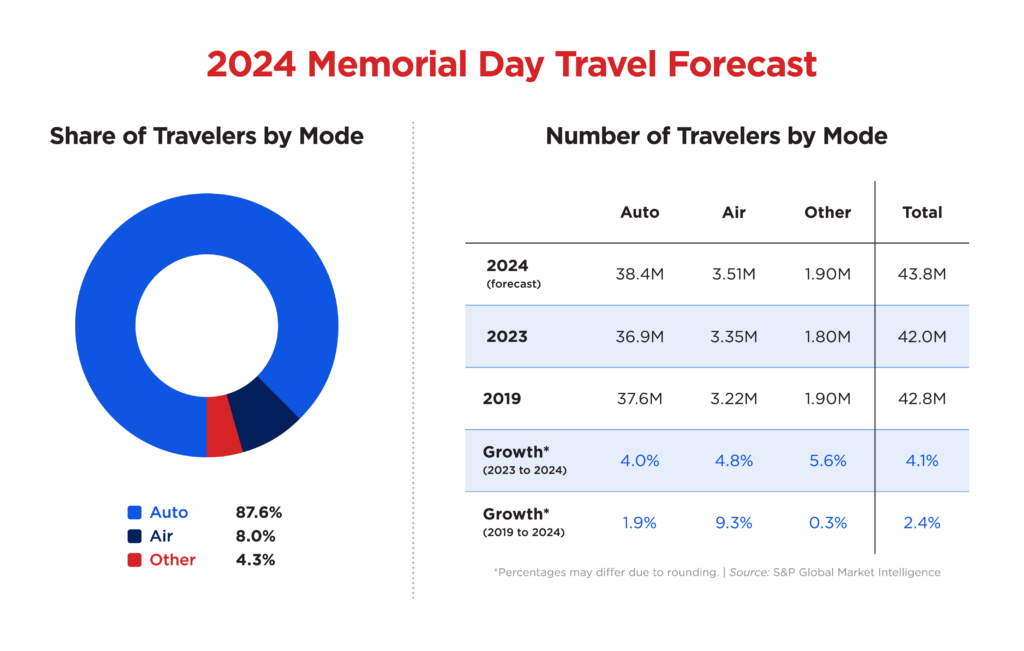
Road trips are expected to set a record. AAA projects 38.4 million people will travel by car over Memorial Day weekend, the highest number for that holiday since AAA began tracking in 2000. The number of drivers this year is up 4% compared to last year and 1.9% higher than in 2019. Traveling by car is appealing for many people because of the convenience and flexibility it provides. AAA car rental partner Hertz says Orlando, Denver, Atlanta, Boston and Las Vegas are the cities displaying the highest rental demand , with the busiest pick-up days projected to be Thursday, May 23 and Friday, May 24.
This Memorial Day weekend drivers can expect similar gas prices as last year when the national average was roughly $3.57. Pump prices rose this spring but have held somewhat steady in recent weeks. Prices may creep higher as the summer driving season gets underway. The wildcard remains the cost of oil, and unlike last year, there are now two wars – in the Middle East and Ukraine – that could roil the oil market.
Airports are bracing for a spike in travelers. AAA expects 3.51 million air travelers this holiday weekend, an increase of 4.8% over last year and 9% jump compared to 2019. This will be the most crowded Memorial Day weekend at airports since 2005, when 3.64 million flew for the holiday as the travel industry finally rebounded post 9/11. This Memorial Day weekend, air ticket prices are comparable to last year. AAA booking data shows a 1% to 2% increase in prices for domestic flights. Several factors play into how much travelers pay for airfare, including destination, number of stops, and fare class. For example, passengers who book nonstop flights with seat selection and carry-on bags included will likely pay more than those who select basic economy with a layover.
Nearly two million people are expected to travel by other modes of transportation, including buses, cruises, and trains. AAA projects 1.9 million people will take these other modes of transportation, an increase of 5.6% compared to last year. “This category took the biggest hit during the pandemic with fewer people taking public transportation or not cruising at all,” Twidale said. “Now – five years later – we’re back to 2019 numbers. Travel demand has been soaring, and long holiday weekends create the perfect windows for getaways.”
Best/Worst Times to Drive and Peak Congestion by Metro
INRIX , a provider of transportation data and insights, says drivers leaving Thursday or Friday should hit the road early to avoid mixing with commuters. Travelers going back home on Sunday or Monday should avoid the afternoon hours when return trips will peak.
“Travel times are expected to be up to 90% longer than normal. Travelers should stay up to date on traffic apps, 511 services, and local news stations to avoid sitting in traffic longer than necessary,” said Bob Pishue, transportation analyst at INRIX.
Please note that the times listed below are for the time zone in which the metro is located.
For example, Atlanta routes = ET and Los Angeles routes = PT
Source: INRIX
Source: INRIX
Top Destinations
This Memorial Day weekend, travelers are seeking theme parks and entertainment venues in Orlando, New York, Las Vegas, and Southern California. Seattle, Anchorage, and Vancouver rank high because of the popularity of Alaska cruises this time of year. Florida beaches and cruise ports will also be packed. European cities dominate the international list. The top 10 domestic and international destinations below are based on AAA booking data.
Travel Trends
As travelers make plans for summer and beyond, AAA Travel has identified the following trends:
- Bucket Lists : Travelers taking once-in-a-lifetime trips
- Milestones : Families booking anniversary, retirement, and family reunion trips
- Asia : More travelers interested in visiting Asia, especially Japan
- Solo Trips : More people, especially women, interested in traveling by themselves
- Luxury Vacations : More travelers seeking high-end cruises and tours
- Trains : Many travelers interested in rail vacations across New England, Canada, and Europe
- Adventure in Nature : Travelers booking trips to Antarctica, Africa, and South Pacific
Travel Agent Survey
A recent survey of AAA travel agents highlights topics travelers are frequently discussing when booking trips:
- Travel Insurance : 51 % of agents say more travelers are interested in protecting their trips
- 77% of agents say ocean cruises
- 70% of agents say all-inclusive vacations
- 67% of agents say river cruises
Holiday Travel Forecast Methodology
In cooperation with AAA, S&P Global Market Intelligence (SPGMI) developed a unique methodology to forecast actual domestic travel volumes. The economic variables used to forecast travel for the current holiday are leveraged from SPGMI’s proprietary databases. These data include macroeconomic drivers such as employment, output, household net worth, asset prices, including stock indices, interest rates, housing market indicators, and variables related to travel and tourism, including gasoline prices, airline travel, and hotel stays. AAA and SPGMI have quantified holiday travel volumes going back to 2000.
Historical travel volume estimates come from DK SHIFFLET’s TRAVEL PERFORMANCE/Monitor SM . The PERFORMANCE/Monitor SM is a comprehensive study measuring the travel behavior of U.S. residents. DK SHIFFLET contacts over 50,000 U.S. households each month to obtain detailed travel data, resulting in the unique ability to estimate visitor volume and spending, identify trends, and forecast U.S. travel behavior, all after the trips have been taken.
The travel forecast is reported in person-trips. In particular, AAA and SPGMI forecast the total U.S. holiday travel volume and expected mode of transportation. The travel forecast presented in this report was prepared the week of April 15, 2024.
*Memorial Day Holiday Travel Period
For this forecast, the Memorial Day holiday travel period is defined as the five-day period from Thursday, May 23 to Monday, May 27, 2024.
AAA Travel Agent Survey Methodology
AAA clubs distributed surveys to a random sample of their travel agents between March 18 and March 29, 2024 to understand recent traveler trends over the past 60 days. 186 AAA agent responses were collected from 13 AAA clubs (representing 97% of AAA membership overall as of February 2024).
About AAA
Started in 1902 by automotive enthusiasts who wanted to chart a path for better roads in America and advocate for safe mobility, AAA has transformed into one of North America’s largest membership organizations. Today, AAA provides roadside assistance, travel, discounts, financial and insurance services to enhance the life journey of 64 million members across North America, including 57 million in the United States. To learn more about all AAA has to offer or to become a member, visit AAA.com.
About S&P Global S&P Global (NYSE: SPGI) provides essential intelligence. We enable governments, businesses, and individuals with the right data, expertise, and connected technology so that they can make decisions with conviction. From helping our customers assess new investments to guiding them through ESG and energy transition across supply chains, we unlock new opportunities, solve challenges, and accelerate progress for the world. We are widely sought after by many of the world’s leading organizations to provide credit ratings, benchmarks, analytics, and workflow solutions in the global capital, commodity, and automotive markets. With every one of our offerings, we help the world’s leading organizations plan for tomorrow today. For more information, visit www.spglobal.com .
About DKSA
DK SHIFFLET boasts the industry’s most complete database on U.S. resident travel both in the U.S. and worldwide. Data is collected monthly from a U.S. representative sample, adding over 60,000 traveling households annually, and is used daily by leading travel organizations and their strategic planning groups. DK SHIFFLET is an MMGY Global company.
About INRIX
Founded in 2004, INRIX pioneered intelligent mobility solutions by transforming big data from connected devices and vehicles into mobility insights. This revolutionary approach enabled INRIX to become one of the leading providers of data and analytics into how people move. By empowering cities, businesses, and people with valuable insights, INRIX is helping to make the world smarter, safer, and greener. With partners and solutions spanning across the entire mobility ecosystem, INRIX is uniquely positioned at the intersection of technology and transportation – whether it’s keeping road users safe, improving traffic signal timing to reduce delay and greenhouse gasses, optimizing last mile delivery, or helping uncover market insights. Learn more at INRIX.com.

IMAGES
COMMENTS
2010: Travel Is a Luxury, 2020: Everyone Is a VIP. When the recession hit in 2008, the cost of plane tickets soared, influenced by sky-high fuel prices and other factors. Basic Economy fares and low-cost carriers made travel accessible again. Still, unless you were keen on dropping $4,000 on a business-class ticket, you were likely crammed in ...
The travel and tourism industry is growing at an annual rate of 4.41%. By 2026, the projected market value will be just under $1 billion. Here are seven trends driving the future of the travel space. 1. Travelers go it alone. One website reports that 25% of all American millennials plan to travel by themselves each year.
Community Guidelines. In the last decade of 2010-2020, travel has changed in many ways, and trends have affected how and where we go. Some has been for the better, including design-y hotels, chain ...
Sentiment is also growing for upcoming leisure travel in 2024. The share of travelers reporting having travel plans within the next six months increased to 93% in January from 92% in December, according to Longwoods International's monthly survey. Travel price inflation (TPI) fell slightly in January as a result of falling transportation prices.
ON THE RIGHT TRACK. Based on research from its clients, Audley Travel says the travel trends it has identified for 2022 include growing group sizes and increased spend as clients ensure their ...
In 2020 alone, the travel and tourism sector lost $4.5 trillion and 62 million jobs globally. But as the world recovers from the impacts of the COVID-19 pandemic, travel and tourism can bounce back as an inclusive, sustainable, and resilient sector. Two experts highlight some of the key transformations in the sector going forward during the ...
KIDS RULE OK. One leading trend identified in the 2022 Trend Report from holiday rentals community brand Vrbo is a renewed focus on family travel . Dive into family adventures with Vrbo. "Over ...
4. International bookings on the rise. When we look at Flytographer bookings for 2021, 74% of inquiries fall within the USA. Mexico and the Caribbean follow with 7% and 6%, respectively, and finally with Europe, Canada and the Middle East & Asia at 5%, 4% and 3% respectively (see figure 1.4, below). While domestic travel is by far the leader in ...
A key takeaway from the report shows that search volumes across the board rose in Q2 2021, jumping up 70 percent from the first quarter of the year. Travelers demonstrated their desire to make up ...
5 travel trends to track . ... Loyalty balances have been growing over the past year, with 30% of members planning to redeem those balances on imminent future travel. Some 20% plan to continue saving points or miles to redeem for greater travel rewards later. Meanwhile, roughly a third (30%) say their points don't provide the appropriate ...
After two years of near paralysis amid the COVID-19 pandemic, 2022 marked the worldwide return of travel. According to the United Nations World Tourism Organization (UNWTO), the past 12 months have been all about recovery with international tourist arrivals nearly tripling between January and July of 2022-up 172 percent compared to the same period for 2021.
The biggest travel trends for 2024. From gig tripping to home swapping, these are the trends shaping travel in 2024. By Sarah Allard. 18 December 2023. Milagros Pico. If 2022 was all about a return to travel, then 2023 was the year we went further than ever before. Travellers took to the skies, rails, roads and seas to tick off major bucket ...
More than half of hotel bookings are made last minute. On average 55% of hotel bookings made on the Hopper app in 2022 were for same-day check-in. This is an increase of +7.5% points compared to 2021 and 10.8% points compared to 2020. Bookings made in 2023 are trending even more last minute in the first three months of the year, with 63% of ...
AARP's 2022 Travel Trends study includes two surveys on travelers and nontravelers conducted in November 2021. The 15-minute online survey of travelers included 2,008 adults 18 and older who had taken at least one trip within the past two years 50 miles or more away from home, with at least a two-night stay.
Explore Our Guest-Centric Cloud PMS and Contactless Technology. Streamline Your Operations, Enhance Your guest experience, And Drive More Revenue For Your Property Or Portfolio. Schedule Demo. Here we track the biggest changes in the travel industry over the last 5 years: from new technologies to new hotel concepts to new competitors and more.
1900s. The 1900s was all about that horse-and-carriage travel life. Horse-drawn carriages were the most popular mode of transport, as it was before cars came onto the scene. In fact, roadways were ...
Within travel, this means a human touch will be more important than ever. Recent research shows this in action, with 44 percent of US travelers who rarely or sometimes used travel advisors in the past saying they were now more likely to use one post-pandemic. 9 Instead of a return to the old days, however, 2025 will see human employees ...
Longer trips. More and more travelers now prefer to book up to nine-day stays instead of the average three-and-a-half to five-day rental periods from before the pandemic. Vacations requiring advanced planning. Travel agents report a rise in vacations that require booking a year or more in advance. For example, African safaris, honeymoons, etc.
Sounds like a long time ago that all of these things happened and so much has changed since. Even the travel industry has changed a lot in the last half-decade, thanks to technology, online travel agents, and the ability for travel agents to control their own destiny. "The biggest change in the past few years is that agents have greater control ...
This, coupled with the fact that the pandemic has made 61% of travellers want to travel more sustainably, signals a shift in the ways people will travel in the future," says Cat Jones, founder ...
In 2024 the travel sector is flourishing, with nine out of the last 10 record-setting spending days in the global cruise and airline industry occurring this year. Further, travelers are also ...
Virgin Holidays launched a new price program for single parents. Intrepid Travel, which has seen a 16% growth in family bookings, has launched six new family tours in 2018. These tours do not charge more for parents traveling without a spouse. Gone are the days of exclusively two-parent travel offerings - 2018 is the year for all families.
Travel in 2024 and beyond. In 2024, the travel sector has been breaking boundaries. Through March 2024, consumer spending on travel remains strong, and passenger traffic has soared. Mastercard ...
It's difficult to overstate just how much the COVID-19 pandemic has devastated airlines. In 2020, industry revenues totaled $328 billion, around 40 percent of the previous year's. In nominal terms, that's the same as in 2000. The sector is expected to be smaller for years to come; we project traffic won't return to 2019 levels before 2024.
Expedia Group Media Solutions' blog provides valuable insights and tips for travel industry marketers looking to maximize their advertising efforts. Stay up to date with the latest trends and strategies. ... marketing disaster recovery events hotel marketing infographic products and solutions research sponsored listings sustainability travel ...
Overseas Adventure Travel Trends for 2024. Luxury travelers are more interested in customized and private tours than general group trips, based on research from Grand View Research.As travelers seek new horizons and immersive experiences, Overseas Adventure Travel (O.A.T.) reveals the top three trends shaping the travel setting in 2024. These trends are expected to shape the industry for years ...
According to recent data from Hilton.com, the most searched destinations are: 1. Hawaii. Nestled on 40 acres of lush, tropical gardens fronting Wailea Beach, Grand Wailea Maui, A Waldorf Astoria Resort offers a range of experiences, from nine inter-connected pools through waterslides and swing sets, to eight dining experiences.
In fact, Japan was the top destination when the MEI looked at travel over the past 12 months. 01. Munich, Germany. Not to downplay the year-round appeal of beer and bratwurst, but the Bavarian hub's anticipated boom in tourism could be attributed to its hosting of the opening match of the European Football Championships in June.
5/13/2024. WASHINGTON, DC (May 13, 2024) - AAA projects 43.8 million travelers will head 50 miles or more from home over the Memorial Day holiday travel period*. This year's total number of travelers is a 4% increase over last year and comes close to matching 2005's record of 44 million Memorial Day travelers.
Eleven years later, it remains the most recent tornado to be rated EF5, the strongest possible rating on the Enhanced Fujita Scale. The 11-year gap is the longest since official U.S. records began ...